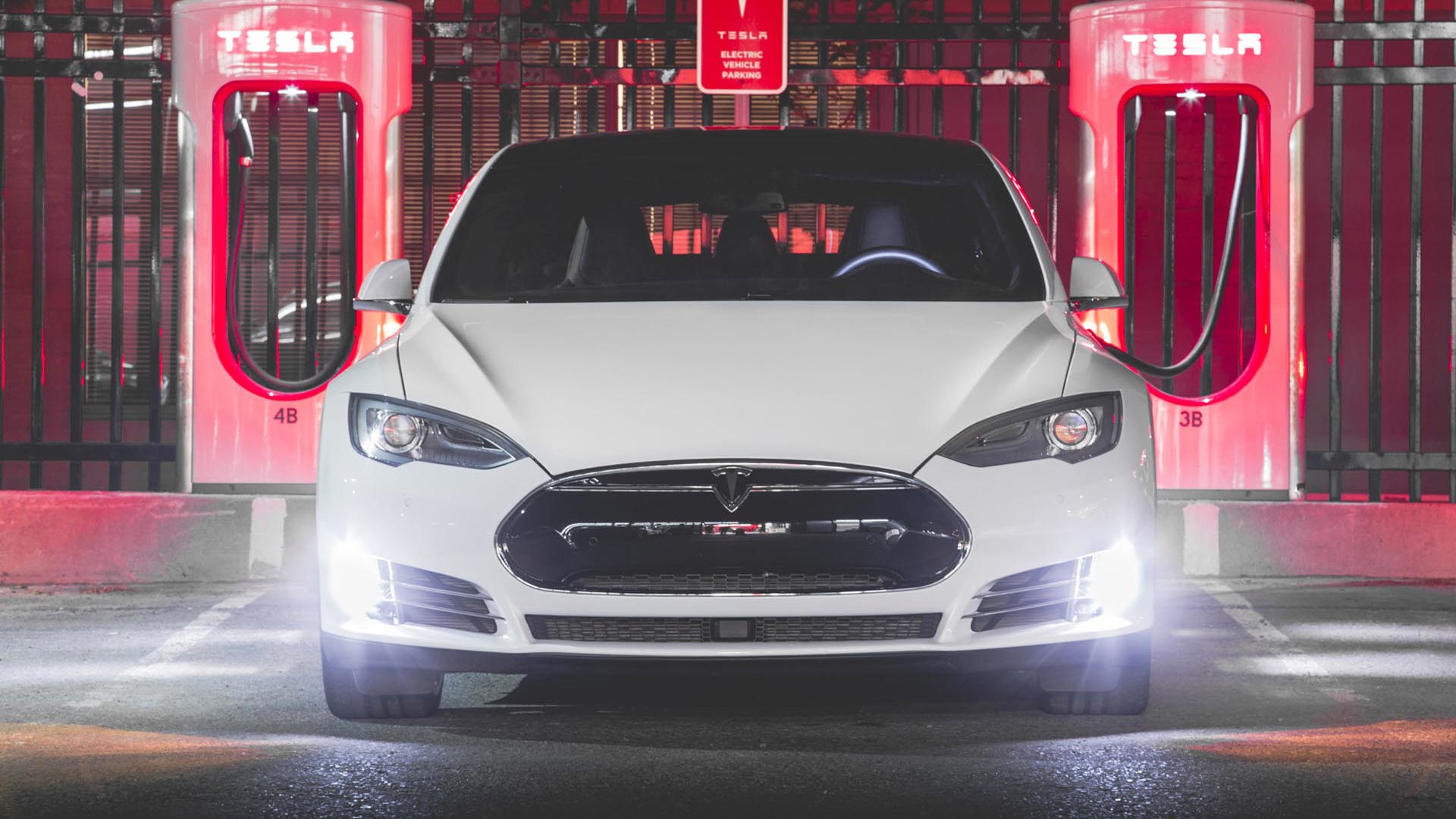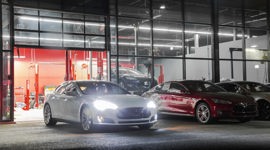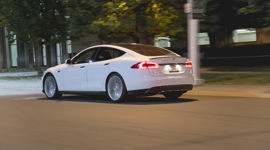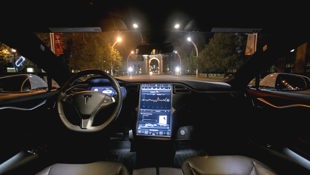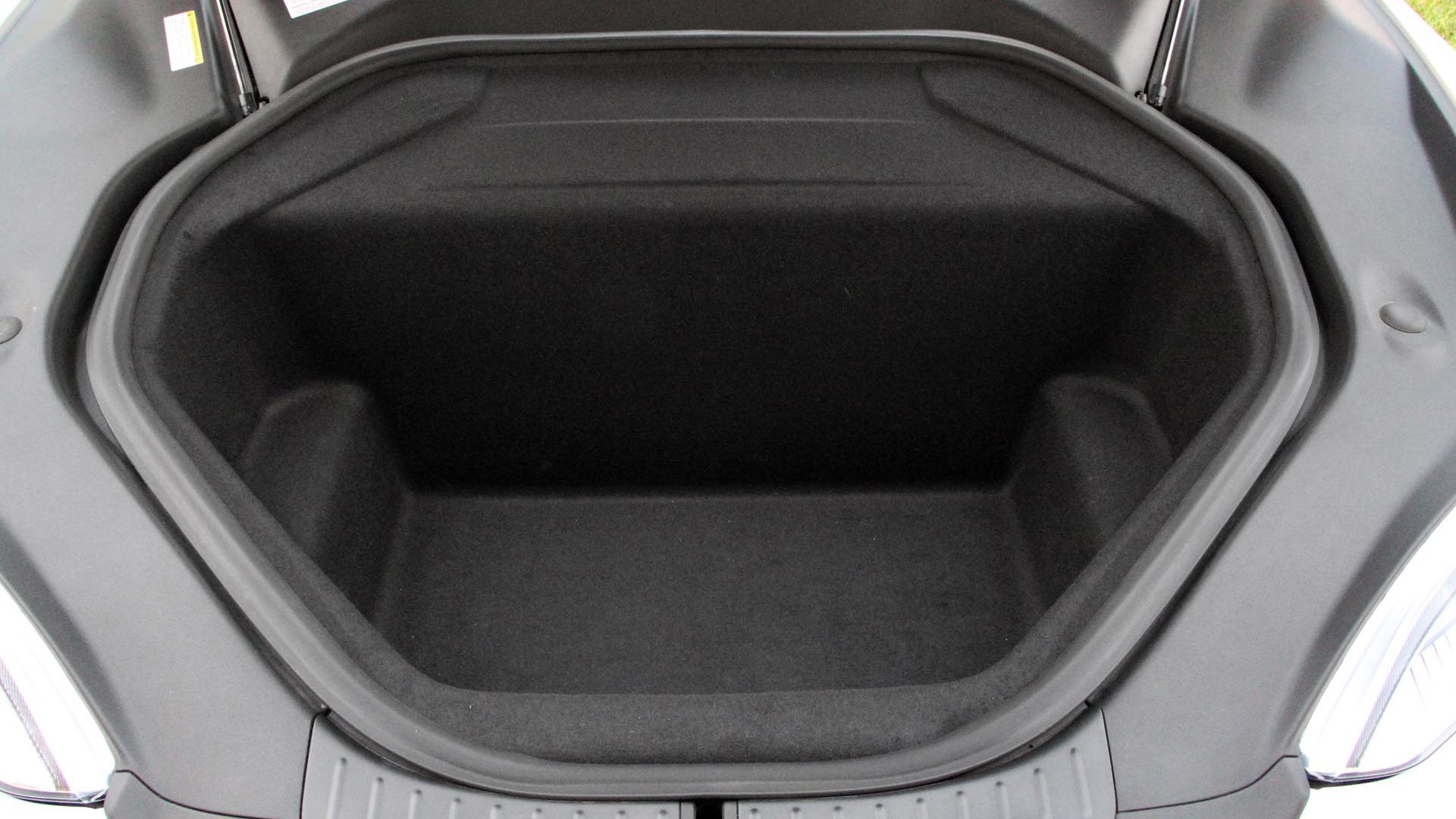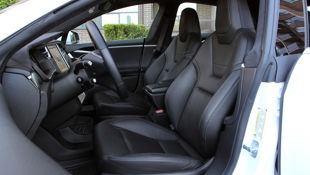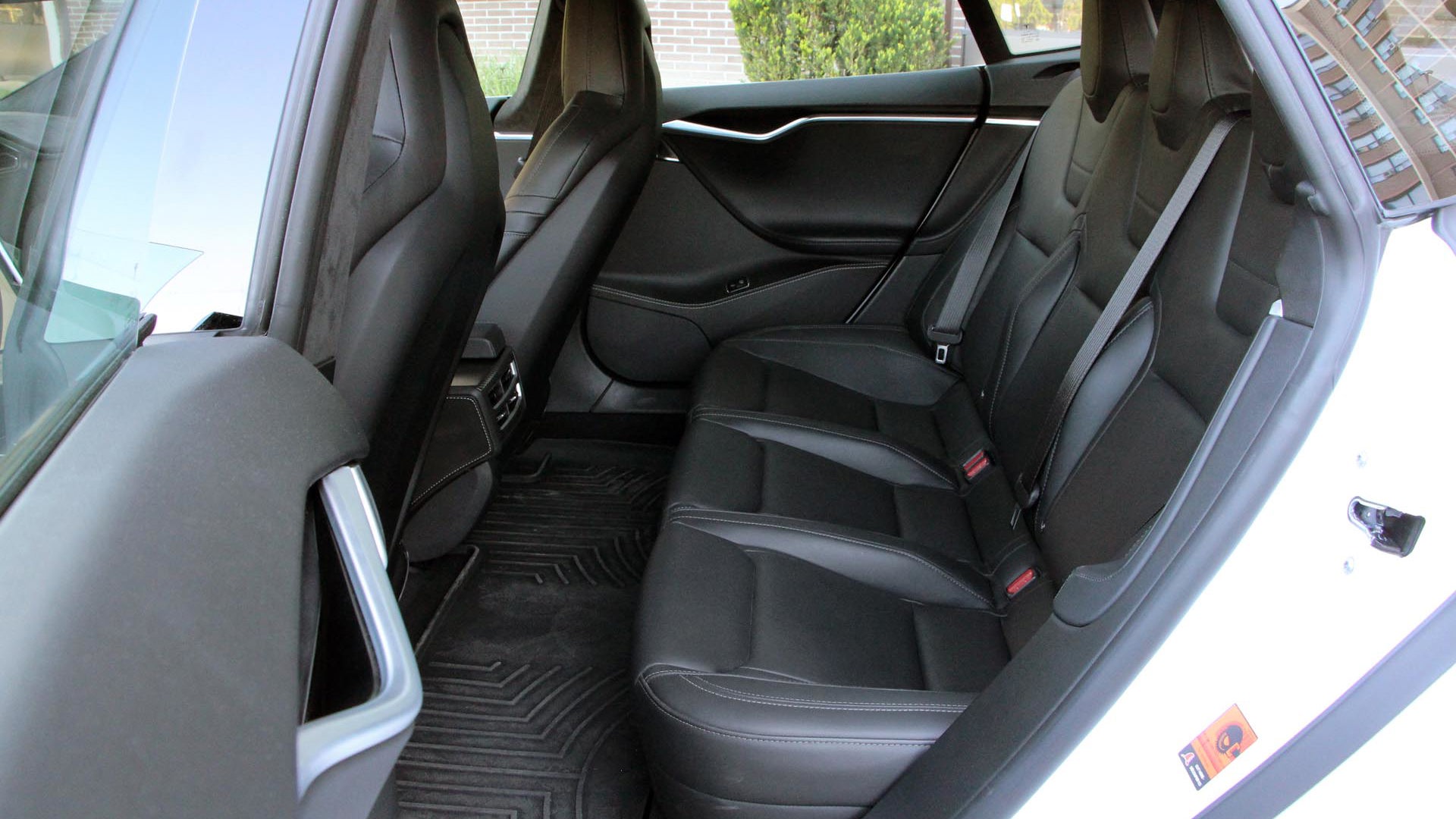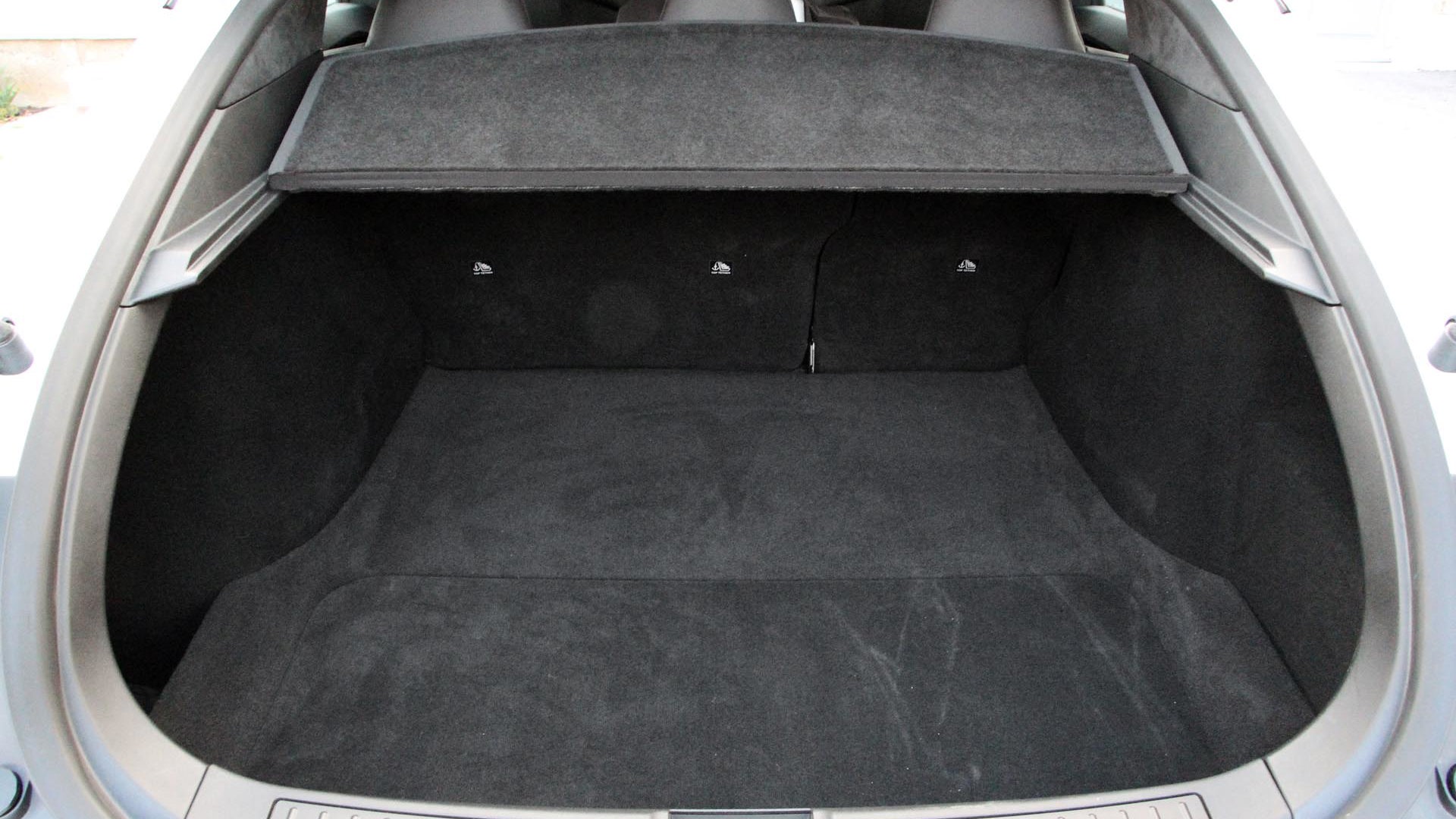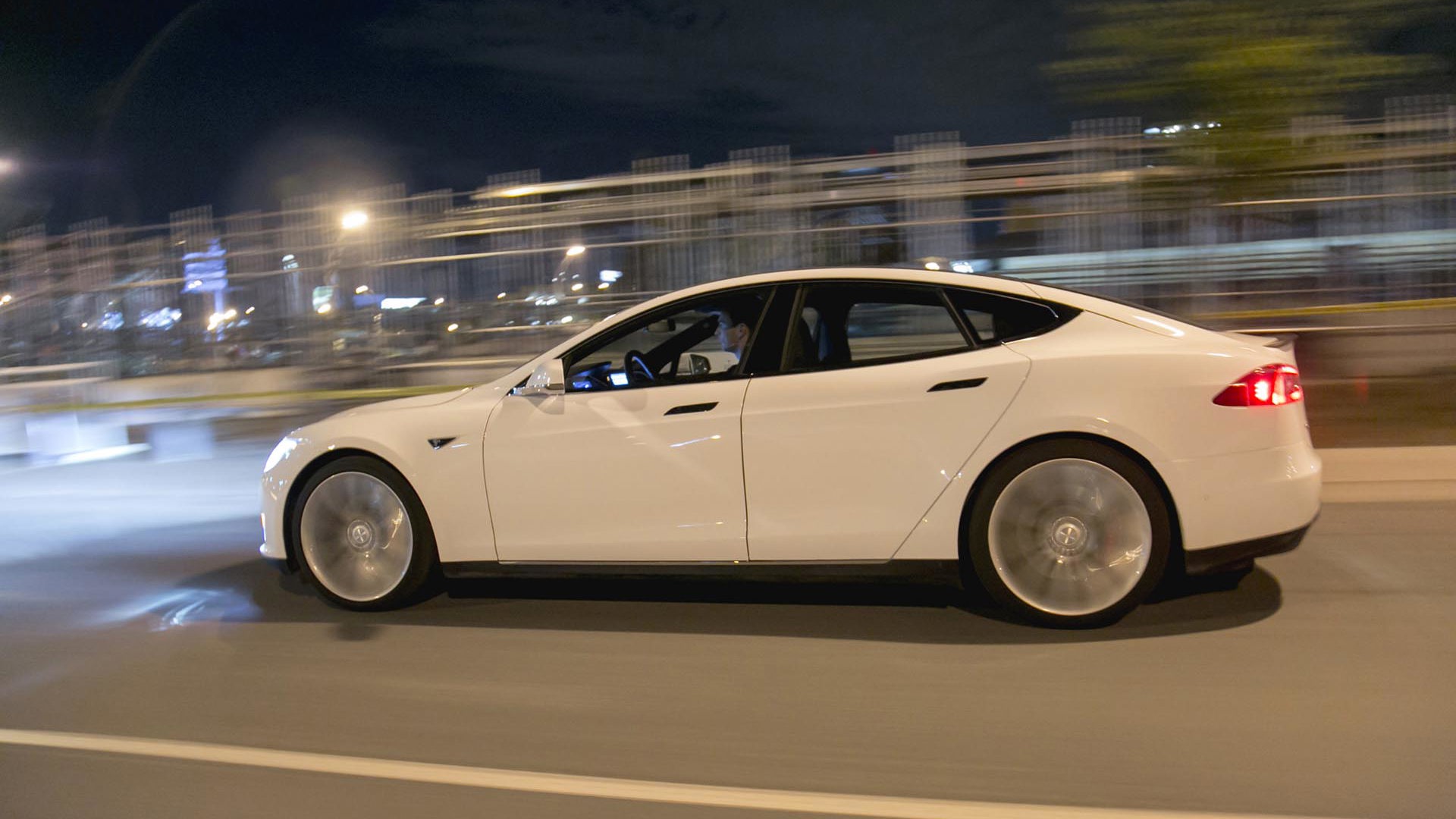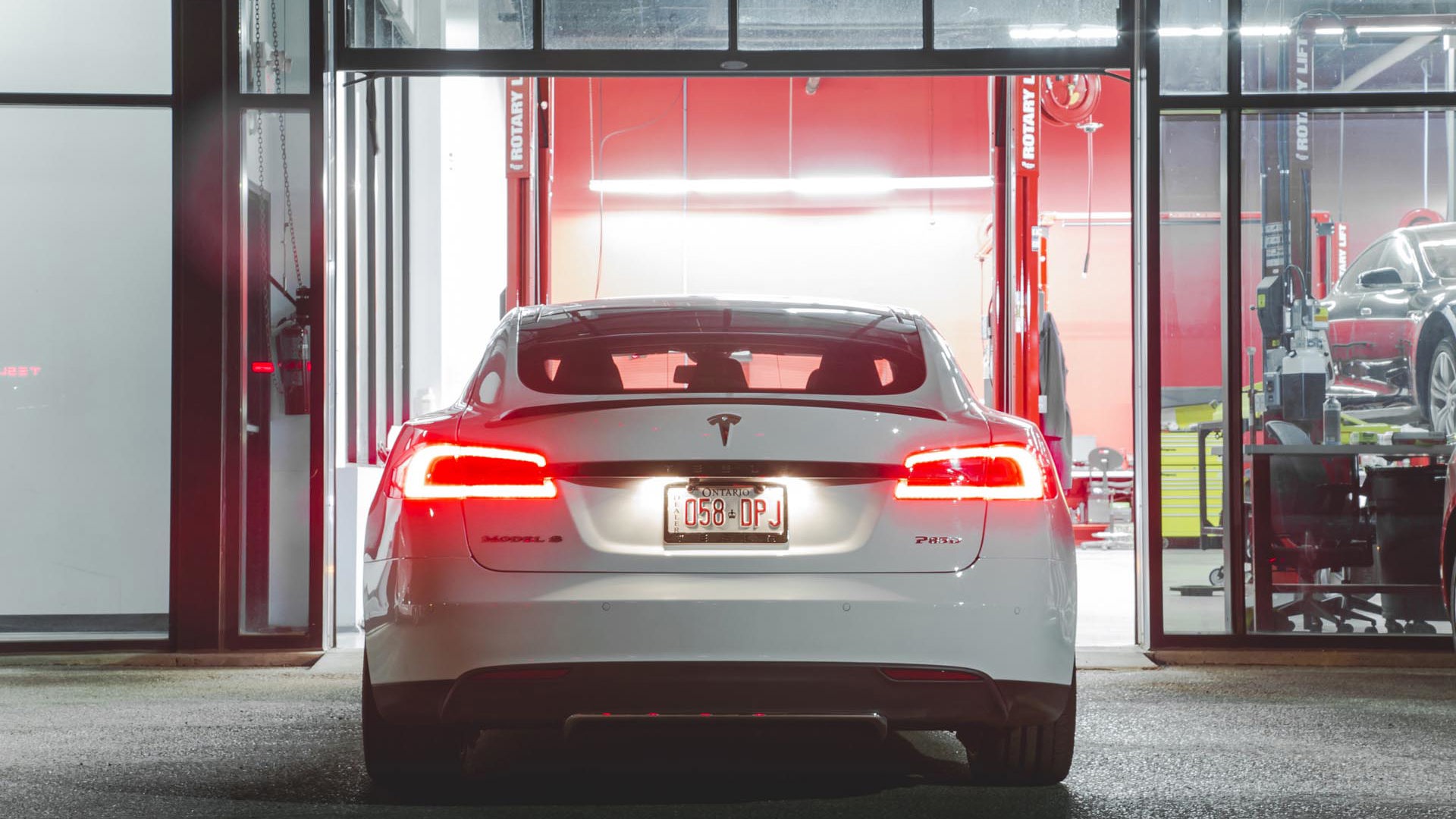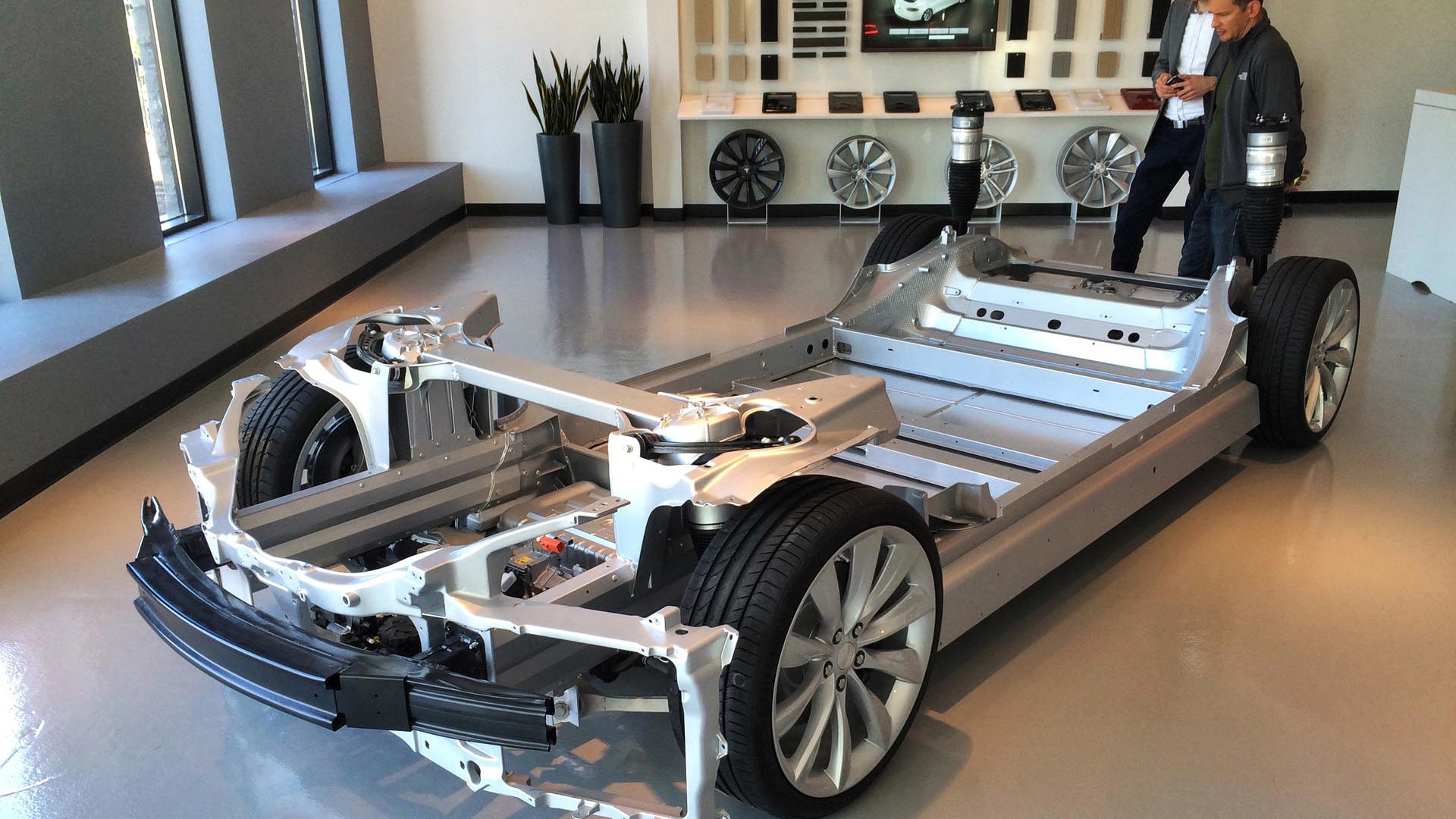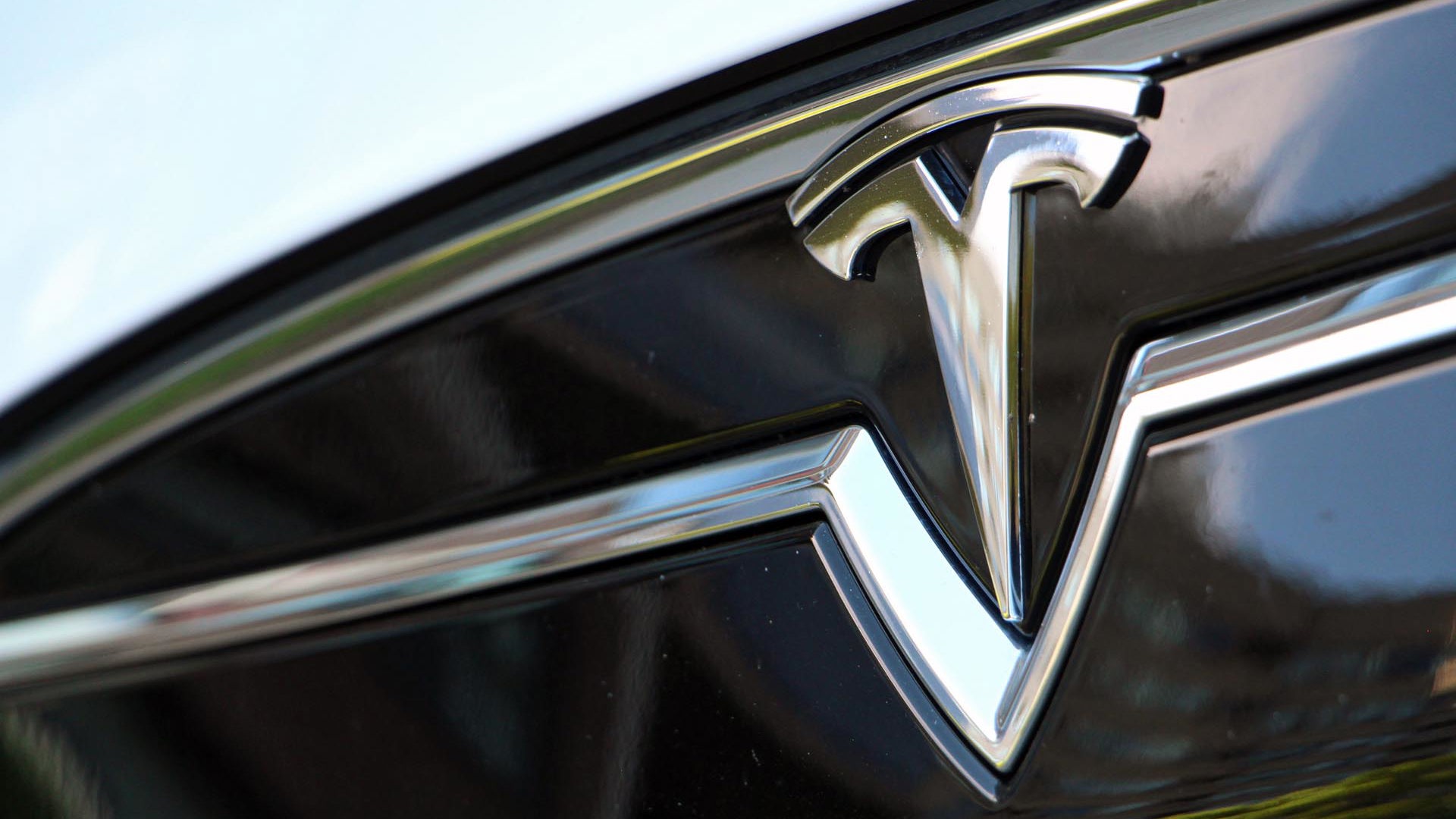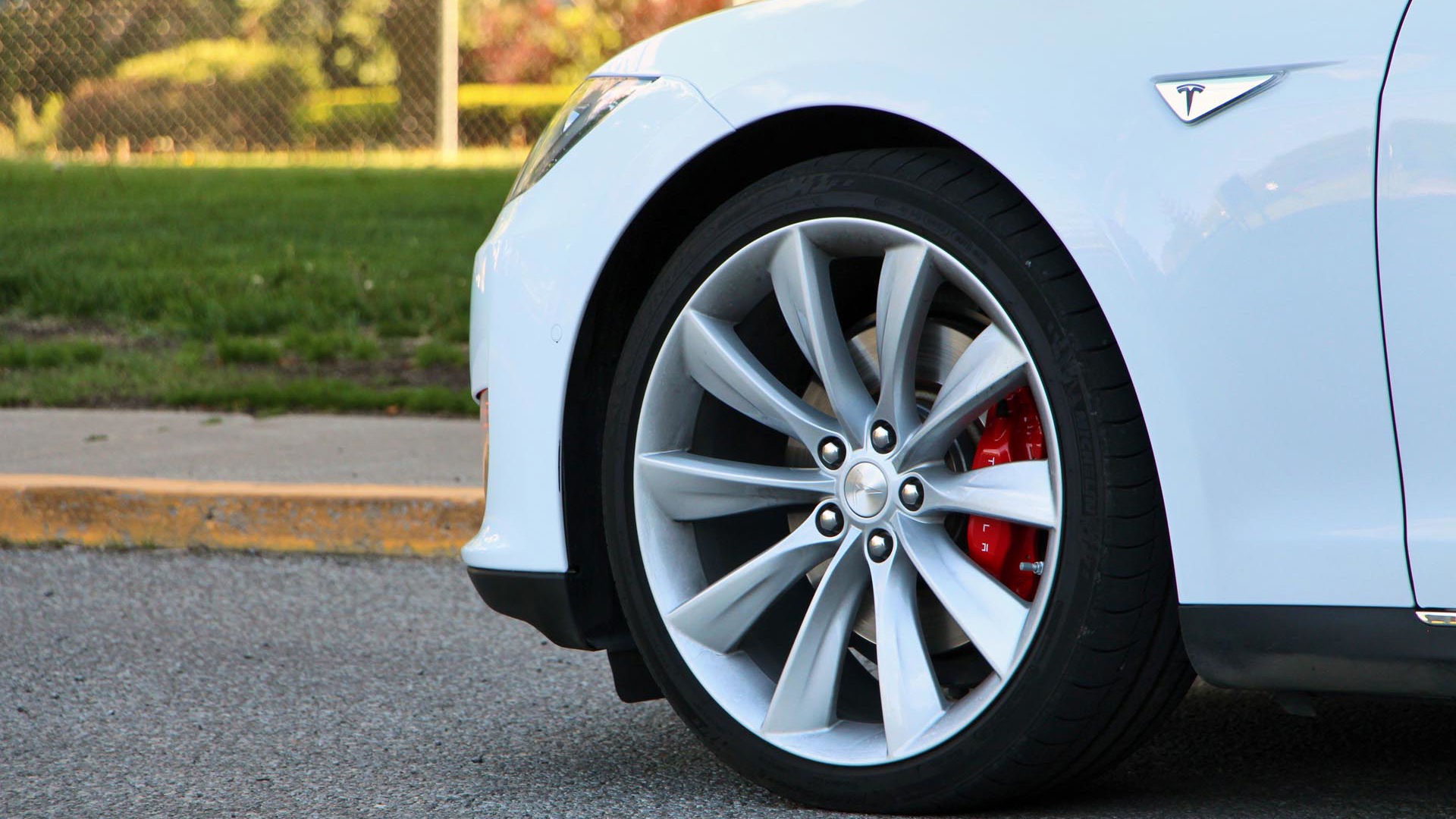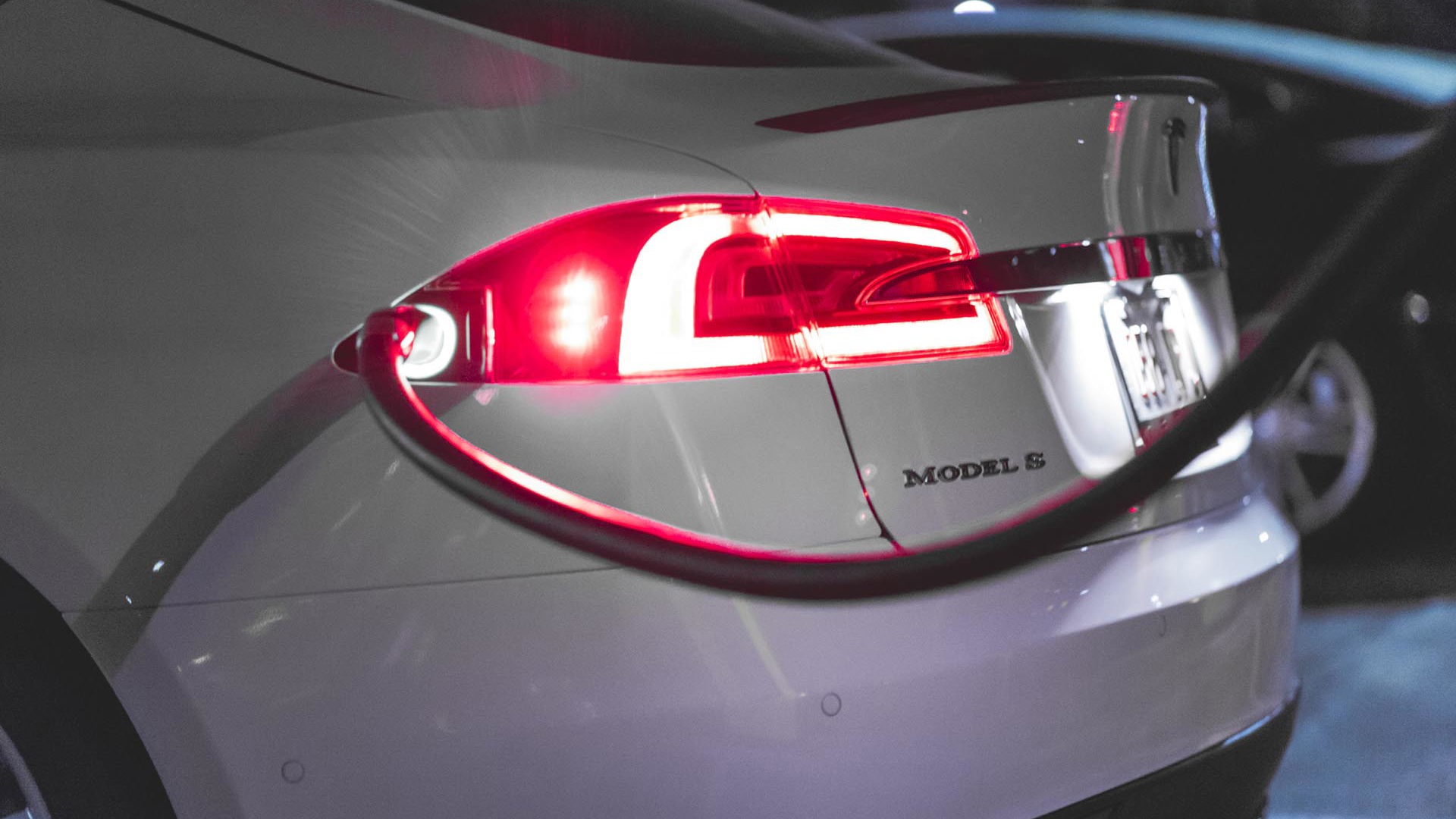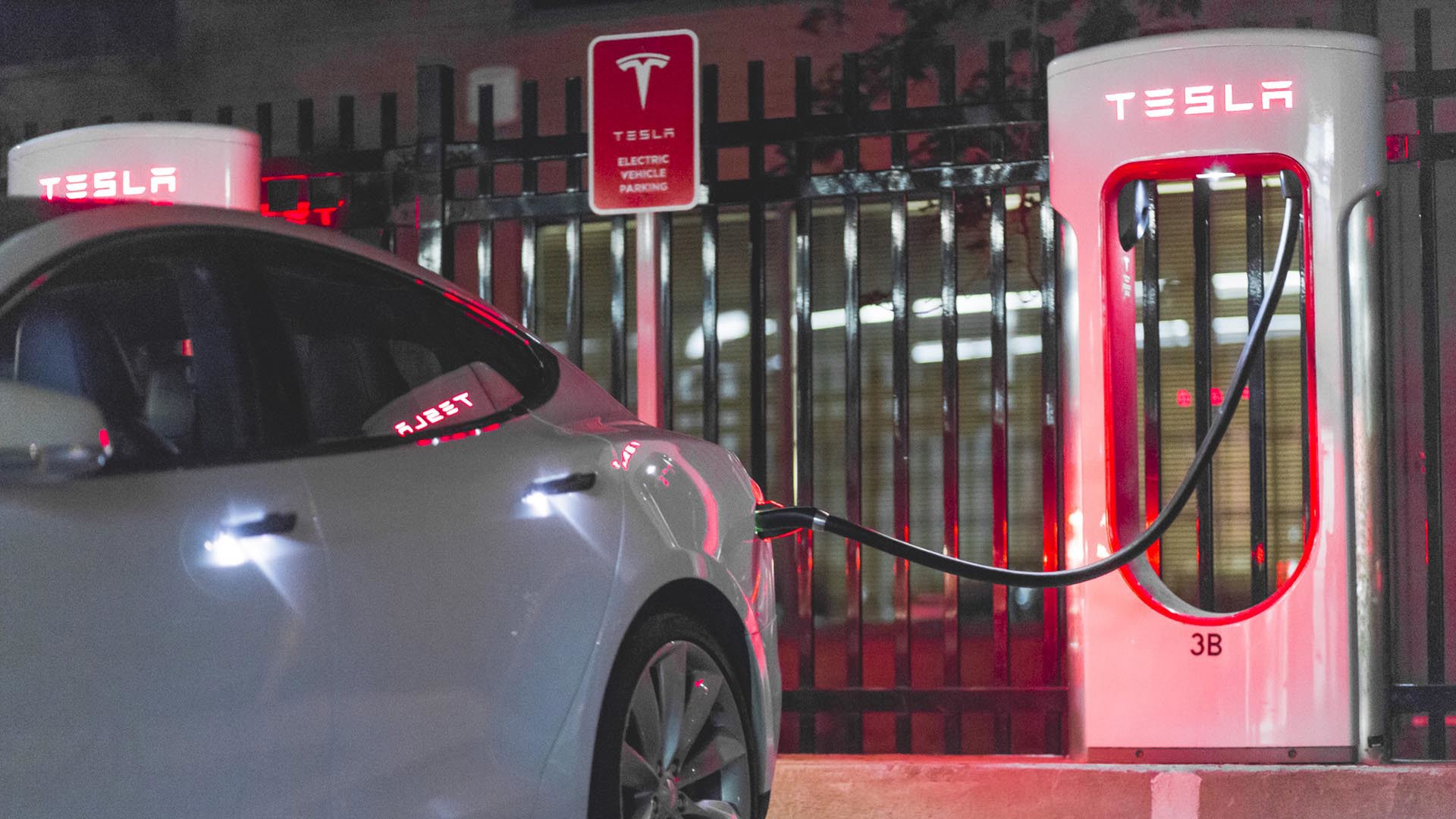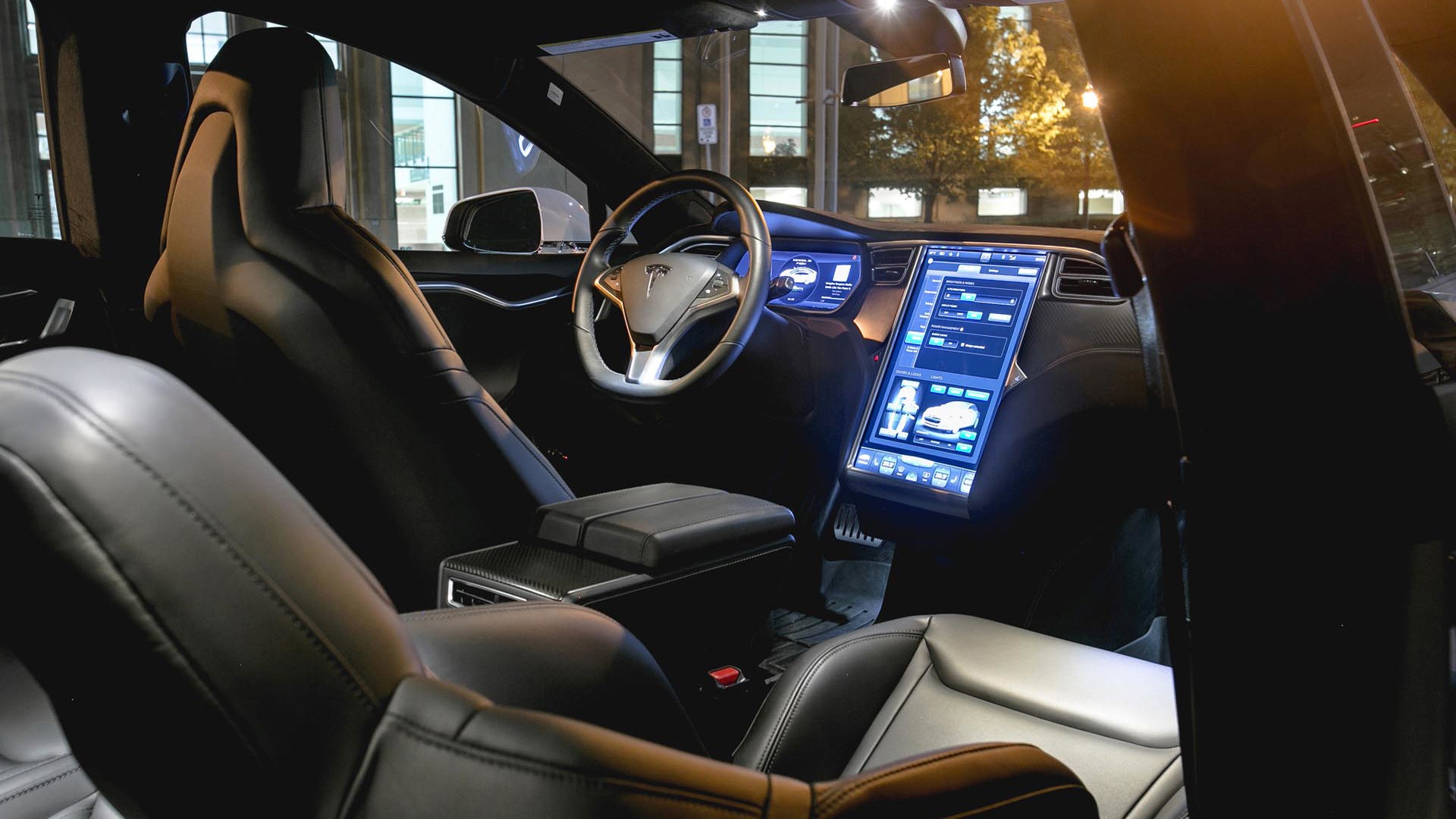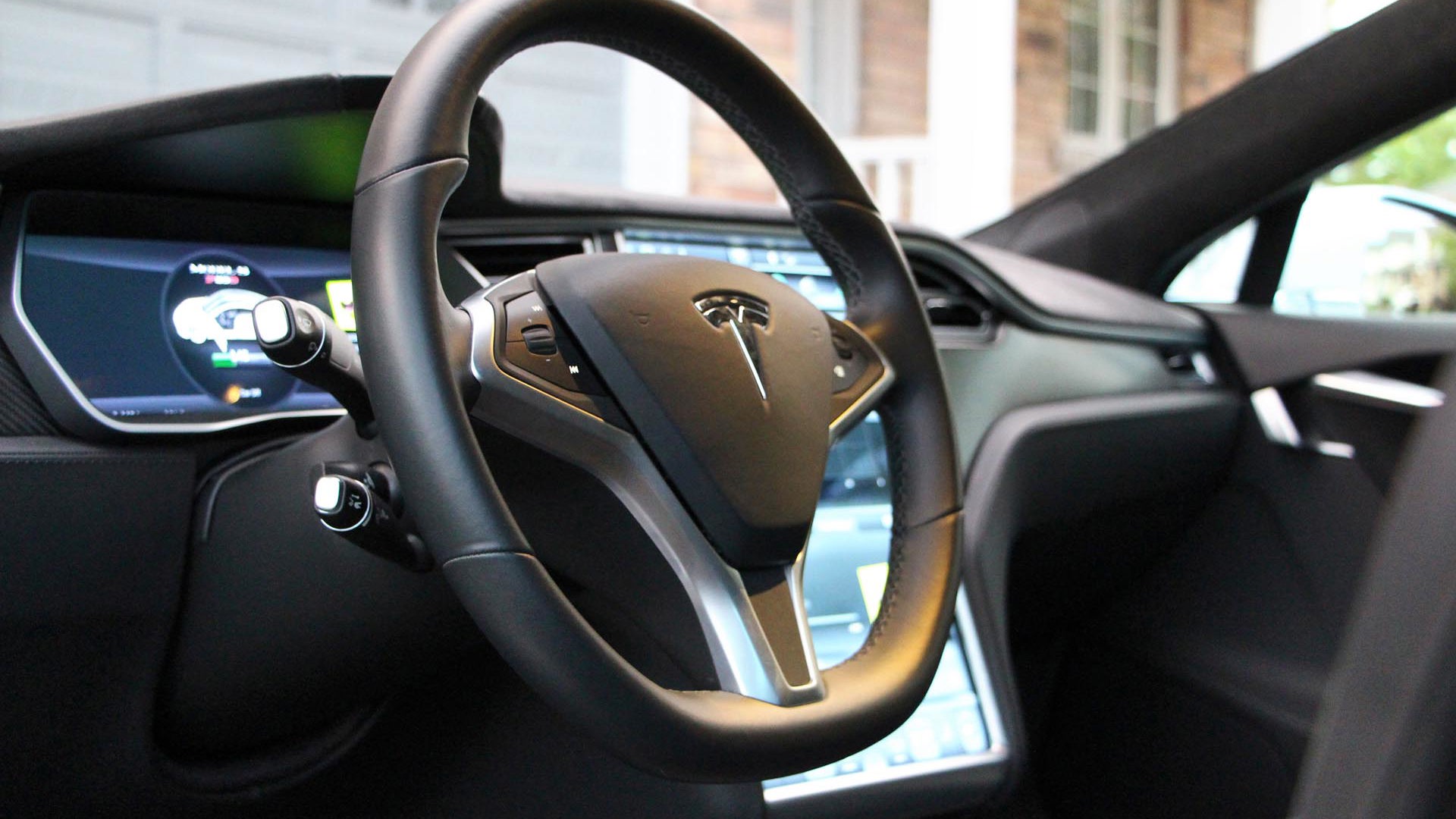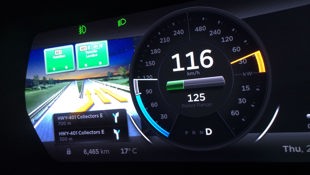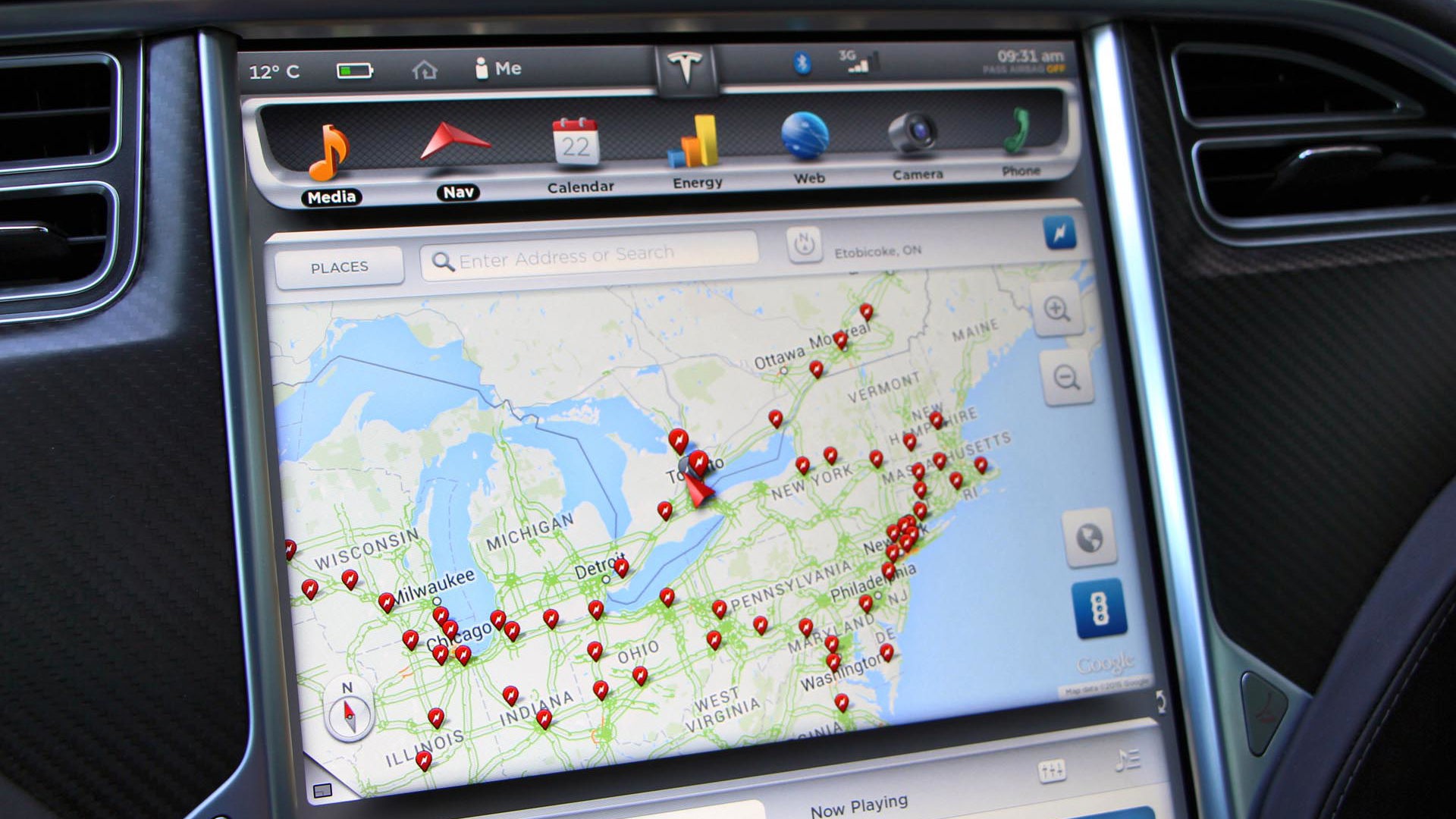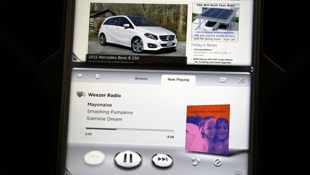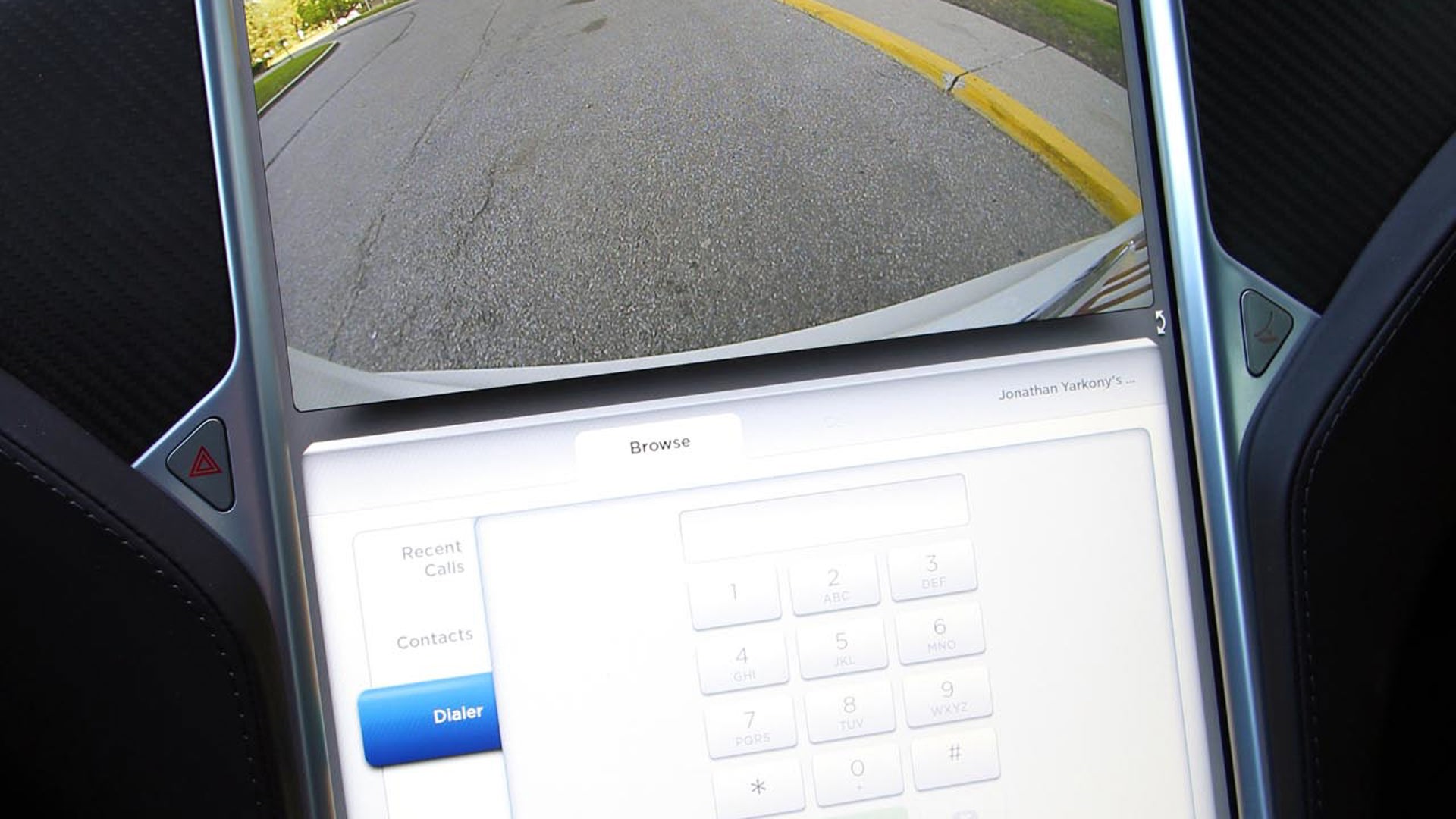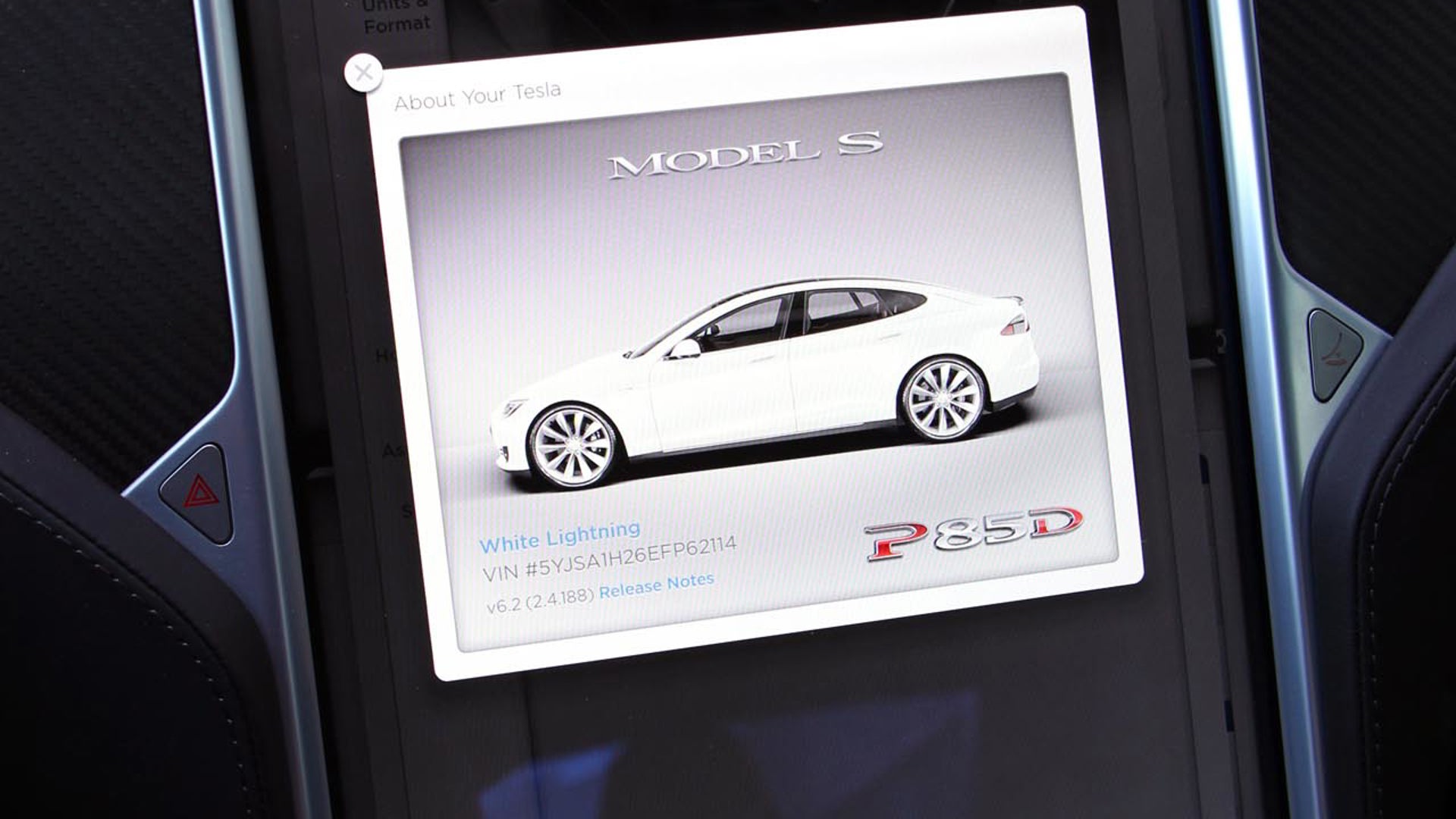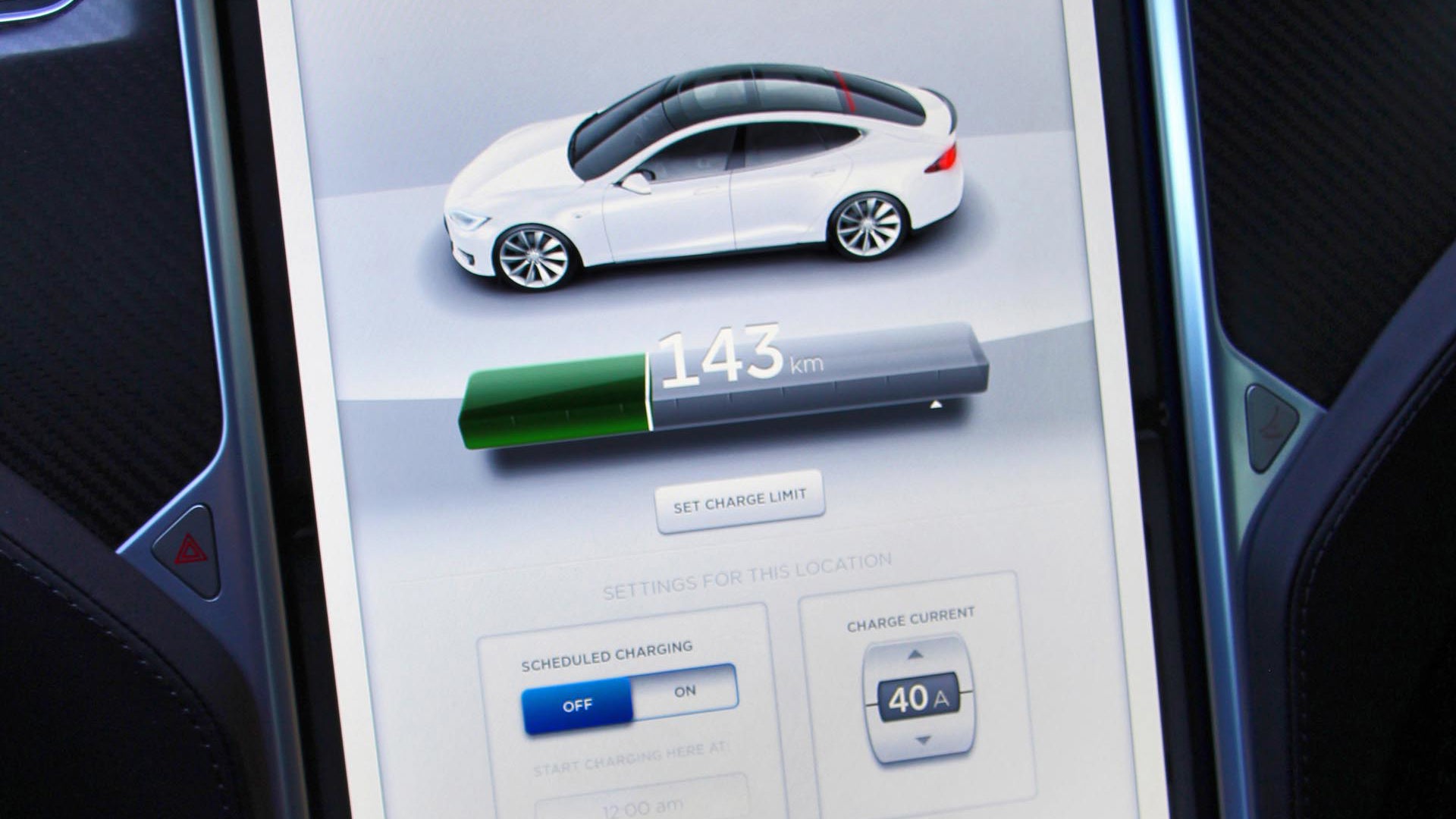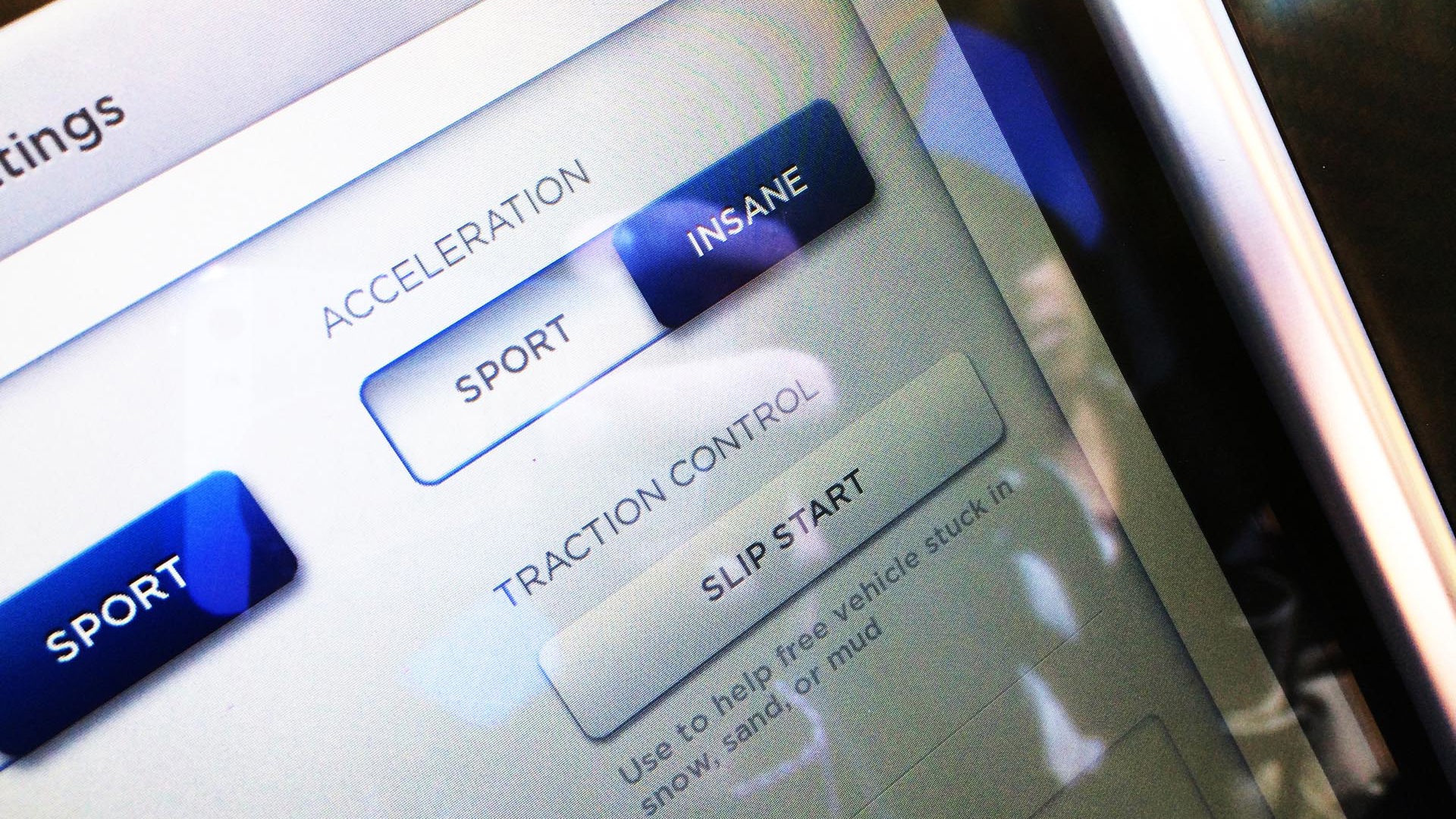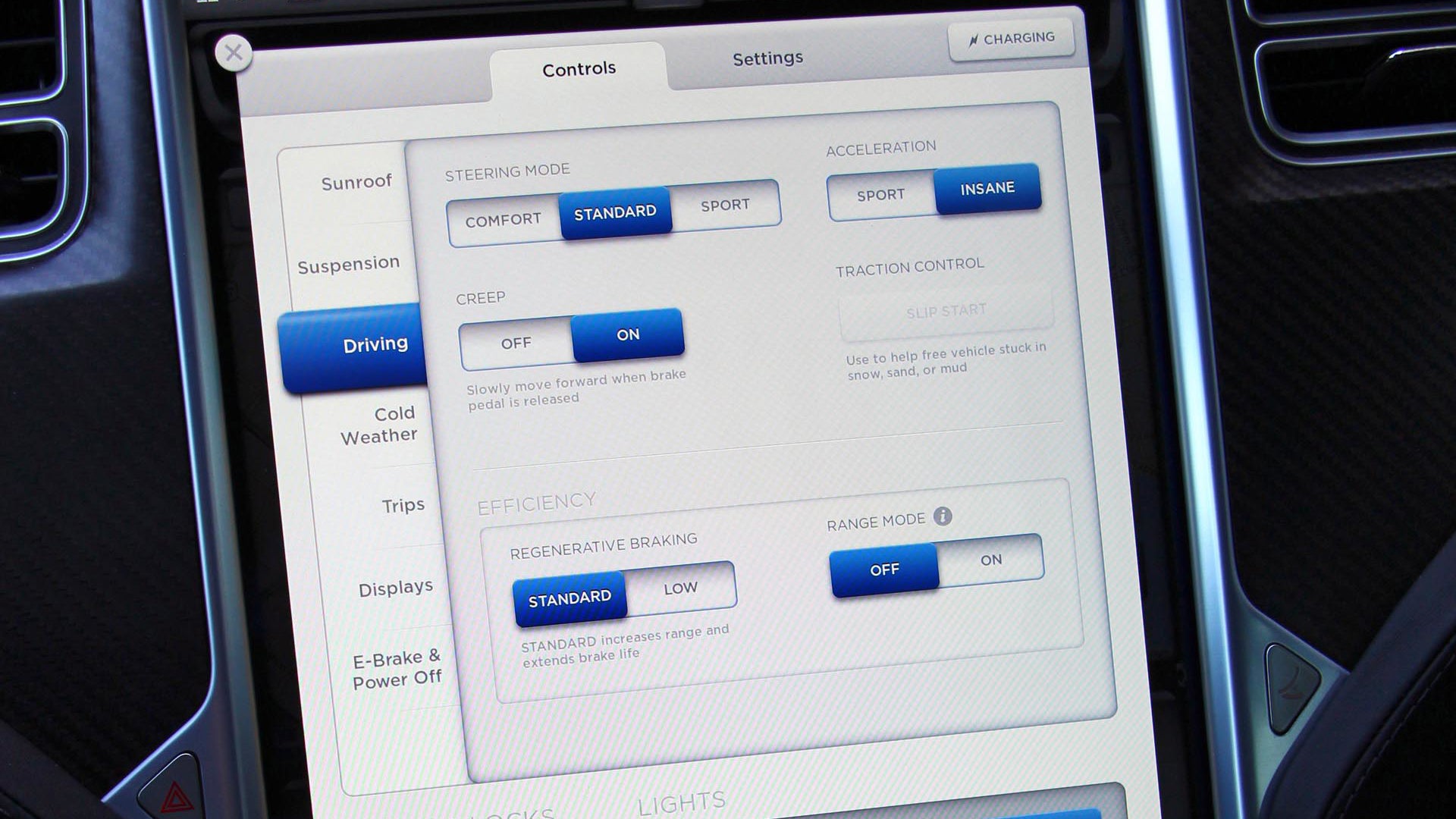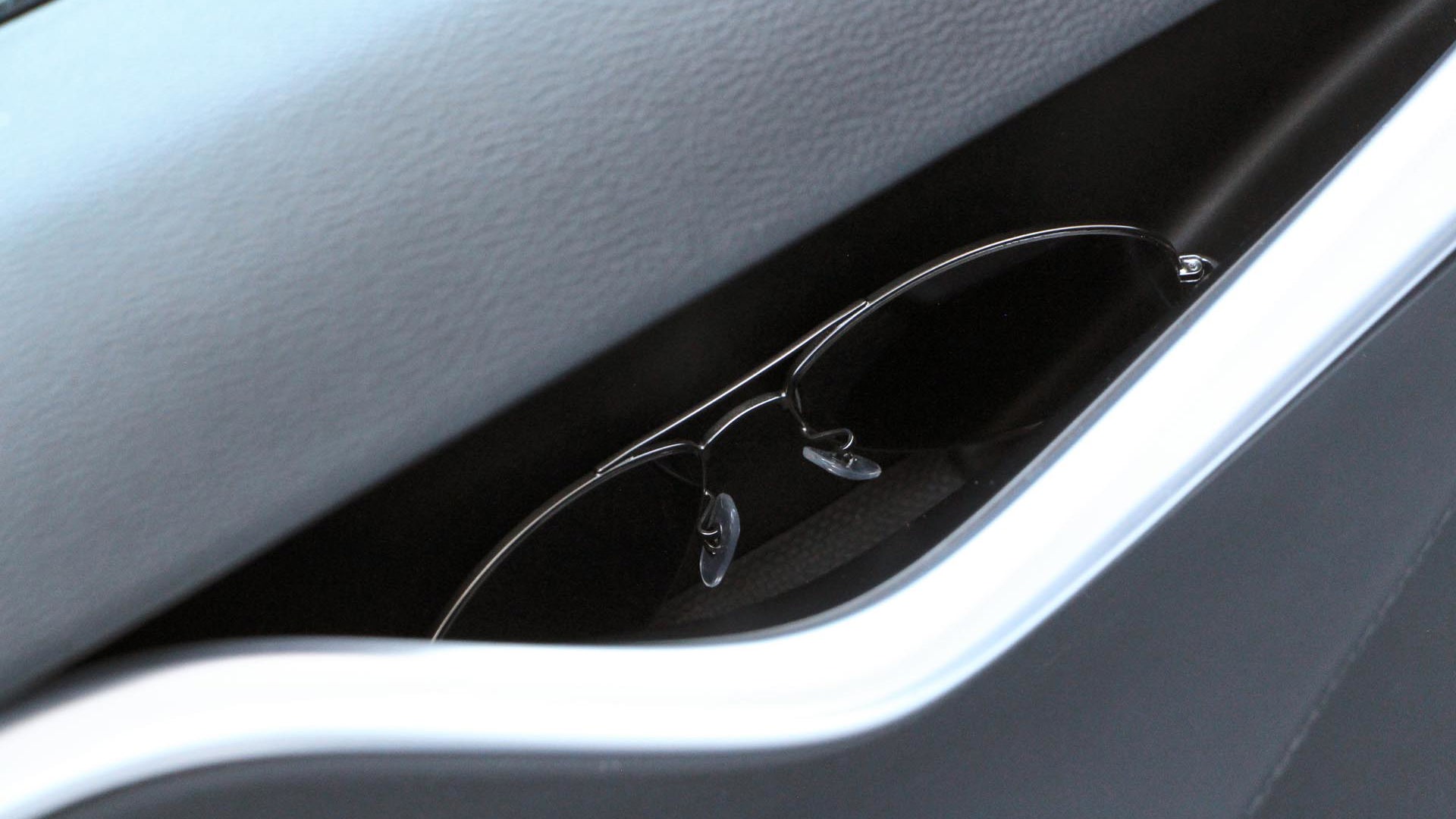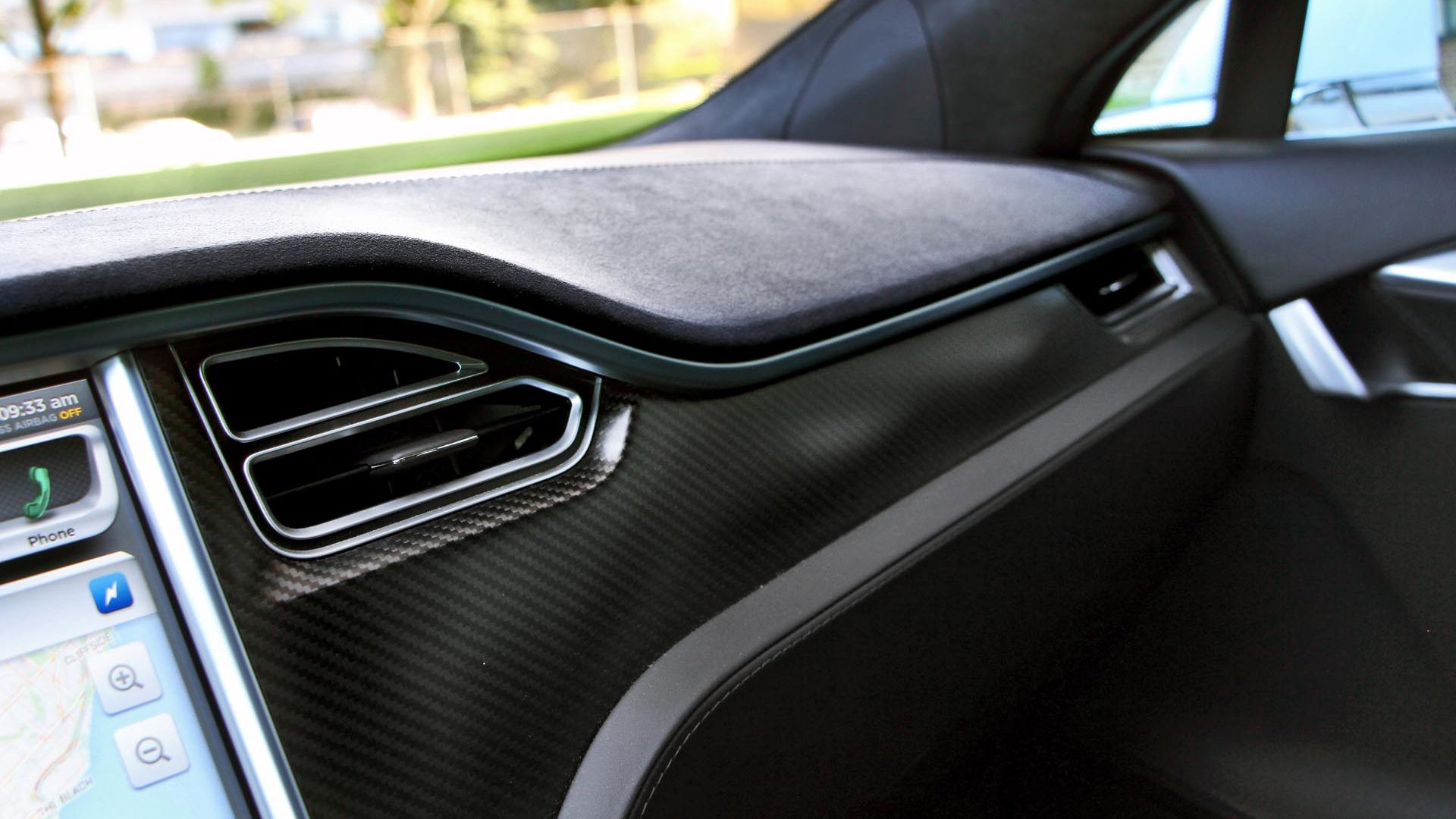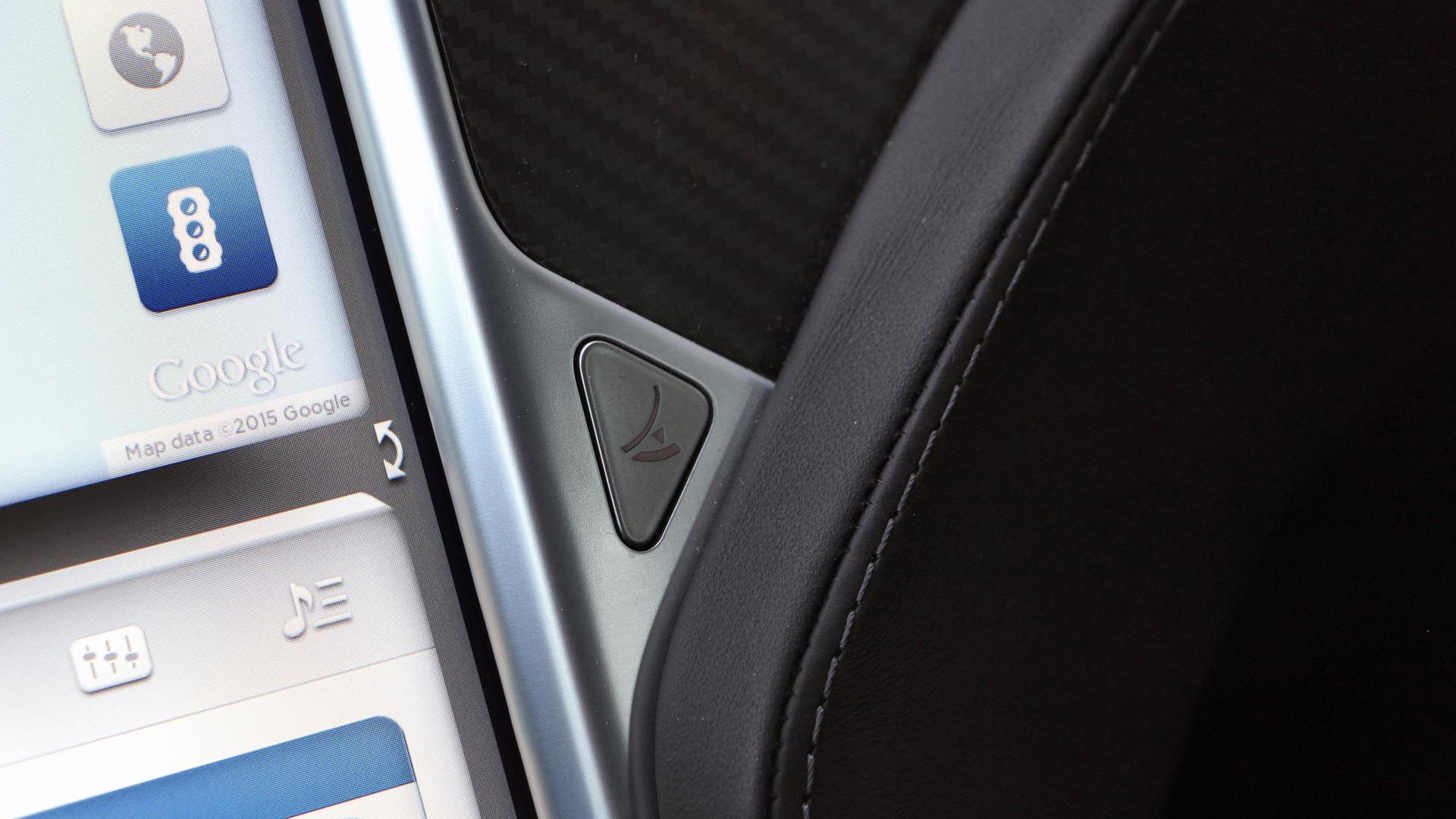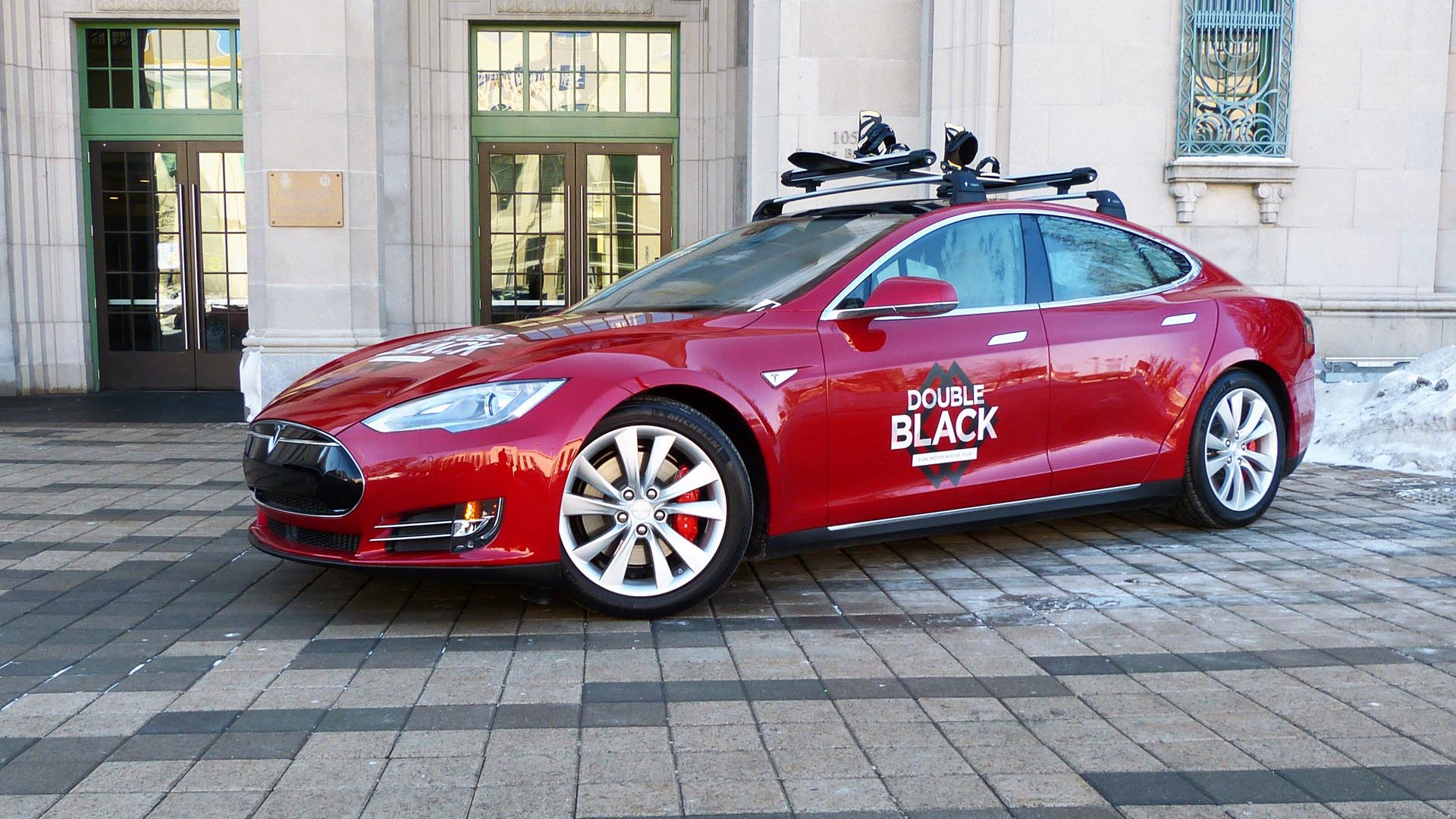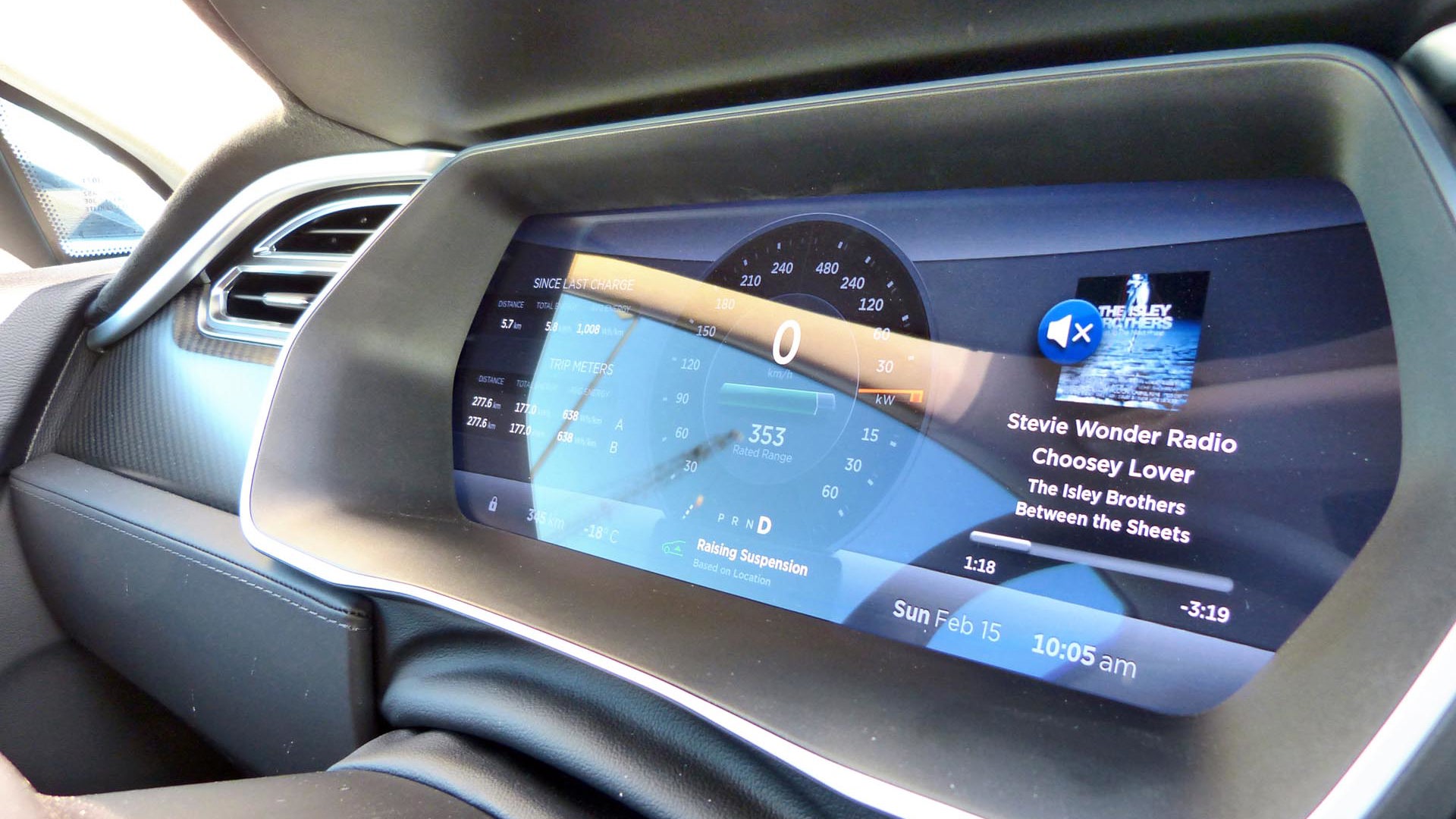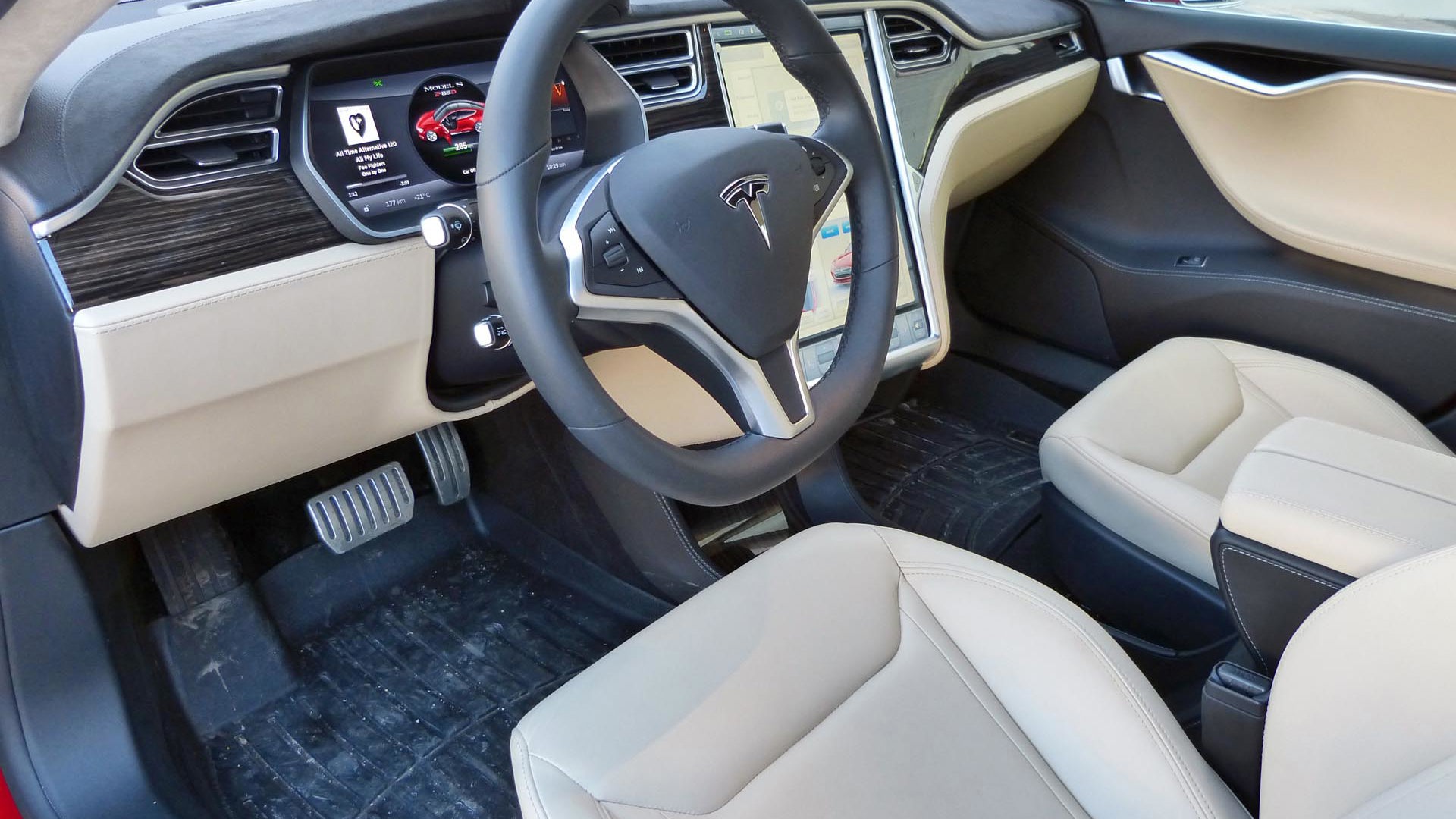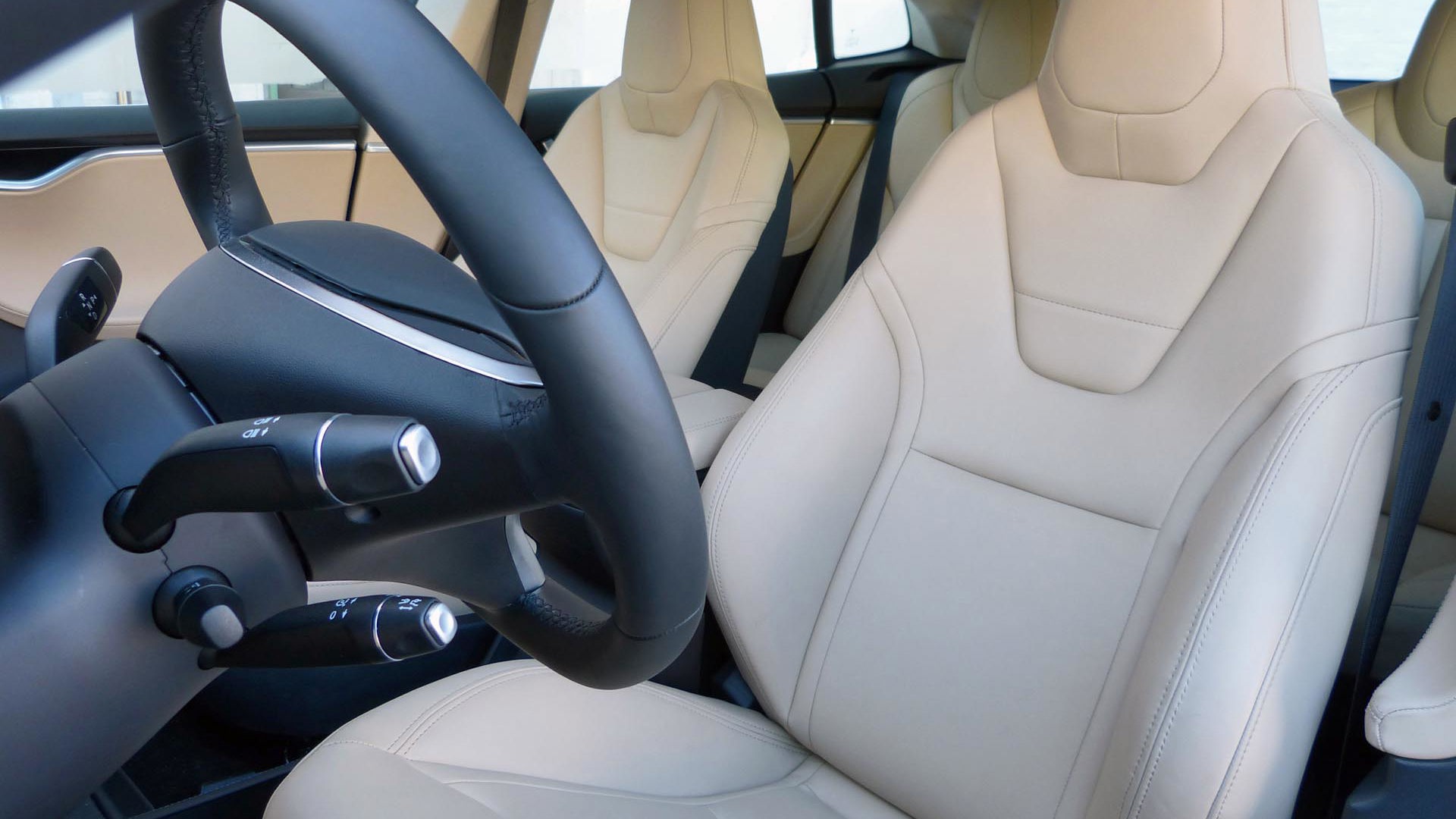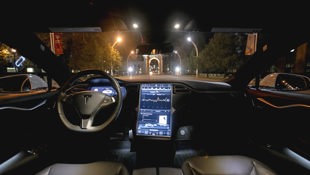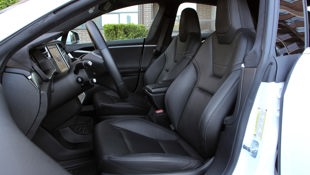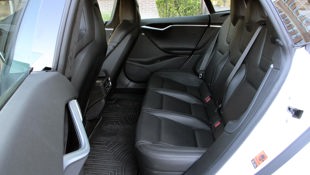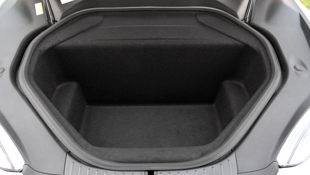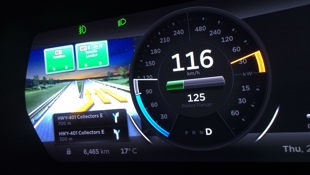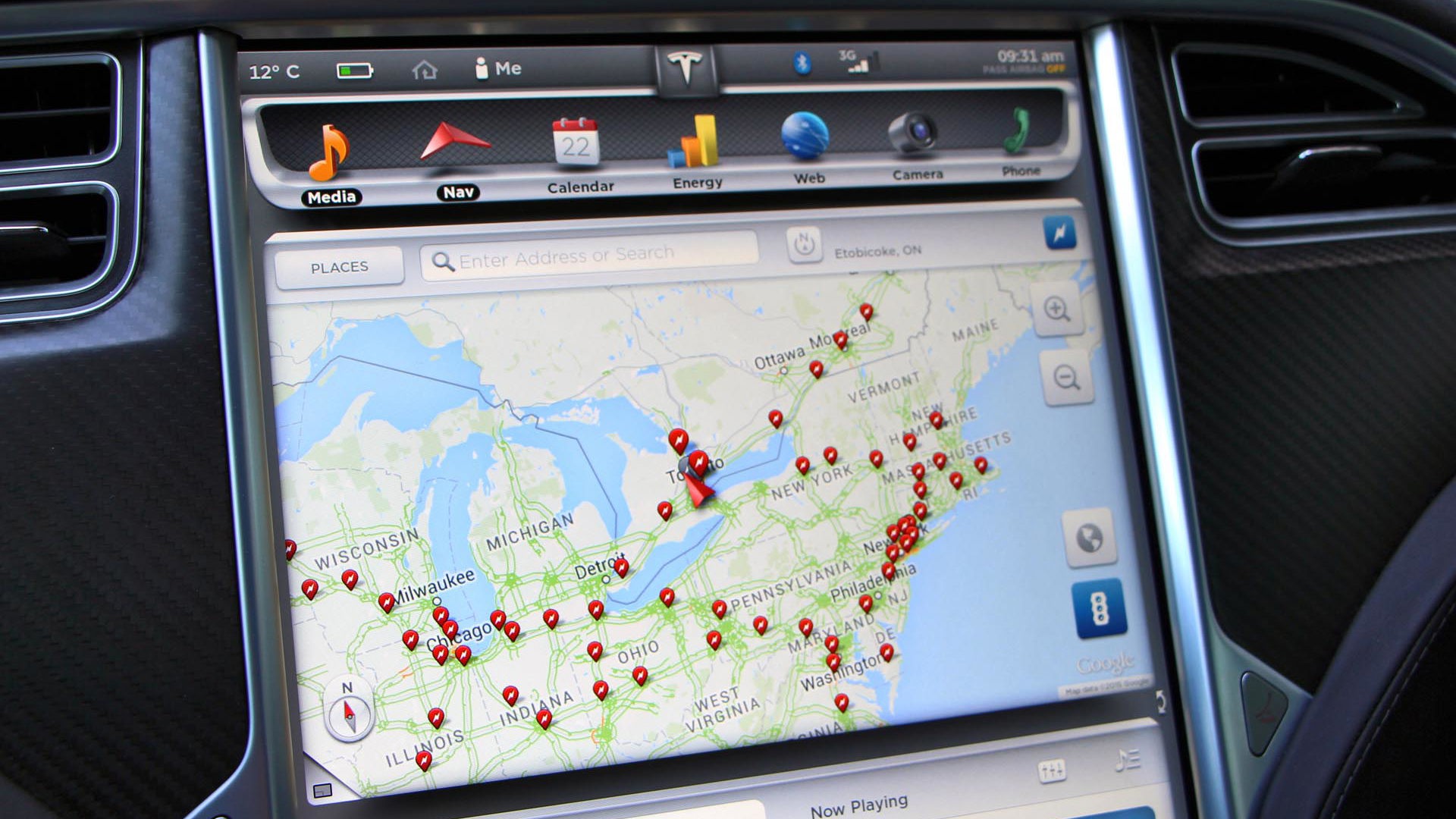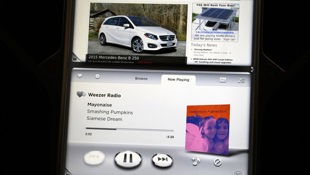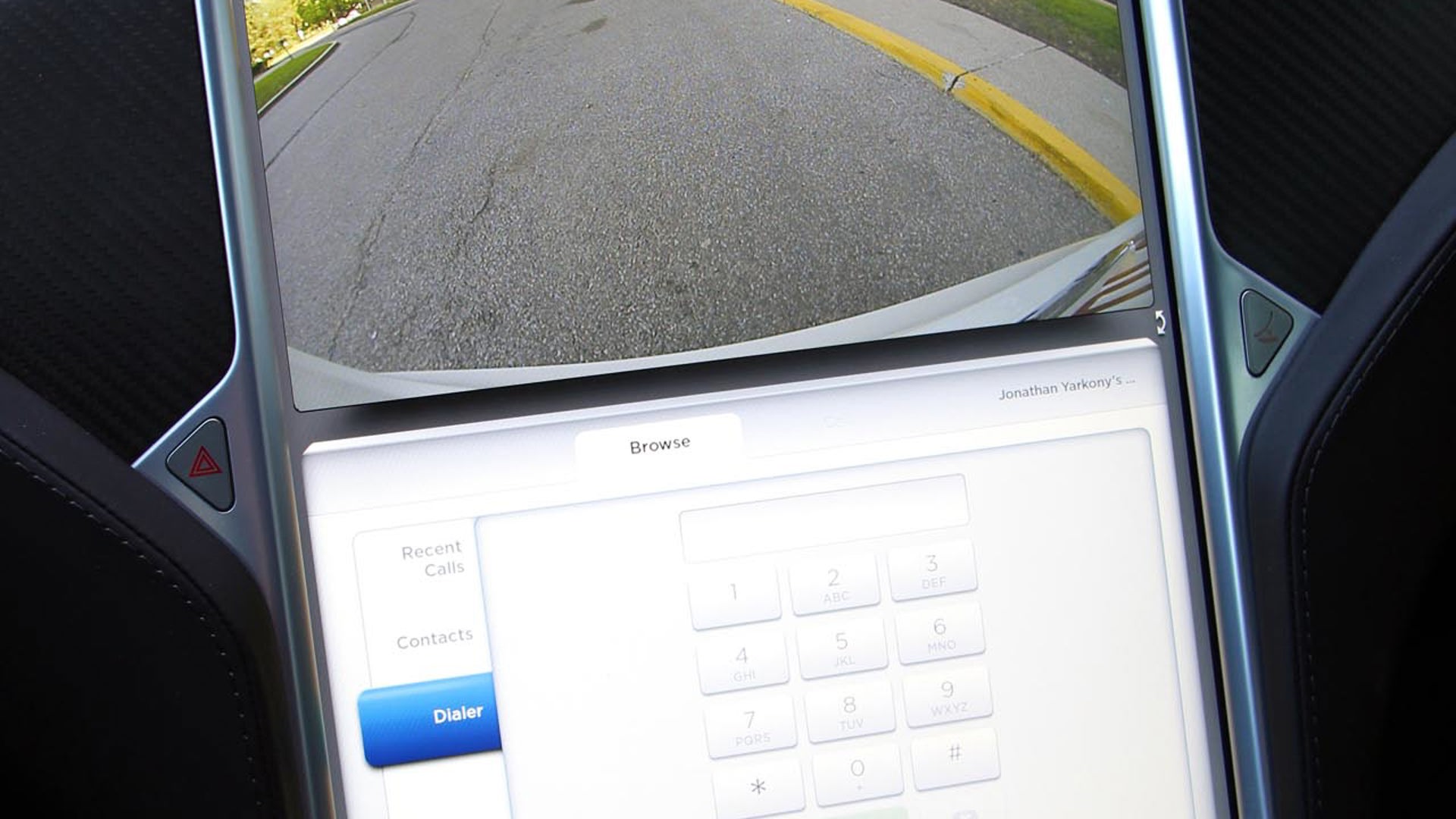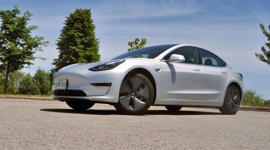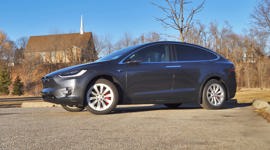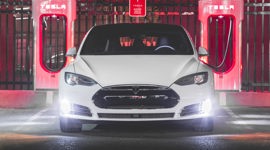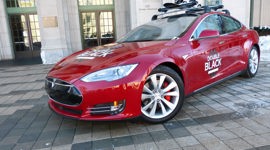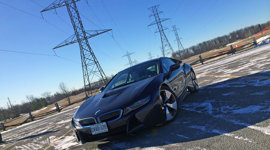Vehicle Type
Early adopters and EV fans found this to be a highly compelling choice, despite the big-dollar ask when new.
Electric full-size sedan
History/Description
The Tesla Model S began production over six years ago and has since become a regular sight on Canadian roadways. A pure electric vehicle (EV), the model S has no gasoline engine or fuel tank as all units come powered, in full, by an electric motor (or motors) in various configurations that define the specific sub-model in question.
Designed as an EV from the get-go, Model S flaunts numerous unique design and functionality touches, including front and rear trunks, very generous cargo space, and a unique interior. The battery pack lives in the floor of the vehicle, helping enhance handling by way of a lowered centre of gravity.
Feature content included steering-wheel-mounted controls, a large central touchscreen infotainment interface, cruise control, advanced safety systems, a glass roof, and more.
Notably, Tesla covered the Model S with an 80,000 kilometre warranty that covers much of the vehicle, including the powertrain, driveline, and more. Some owners opted into a program which doubled the length of the warranty for an added cost. Further, many models have their battery and drive unit covered for eight years and unlimited distance.
So, shoppers should have minimal issue finding a used Model S with plenty of remaining warranty, though said shoppers should determine if and how they’ll need to have the vehicle serviced or repaired before they buy, based on their proximity to the nearest Tesla workshop.
Here’s a handy list of Canadian Tesla Service Centres.
Engines/Trim
Depending on the specific model in question, look for no less than 362 horsepower, with high-performing variants like the P85D bumping that figure well into the 700-plus ballpark. Models with a “D” in their name indicate the presence of a dual-motor setup, which provides all-wheel drive, and models with the “P” in their name reference a ‘Performance’ model. Look for a driving range between 350 and 500 kilometres on most units from the used marketplace.
What Owners Like
Recognition, exclusivity, a full-EV driving experience, and luxurious and upscale feel and execution of the Model S are key reasons that owners report being attracted to this model. Early adopters and EV fans found this to be a highly compelling choice, despite the big-dollar ask when new. Performance is highly rated on most models, as is the overall comfort and an easy-to-drive demeanour.
What Owners Dislike
It’s difficult to find a “bad” owner review of a Tesla Model S in the autoTRADER.ca owner review section, owners have rated this machine 5/5 stars across the board. Some professional reviews cite dissatisfaction with fit and finish of the cabin, as well as squeaks and rattles from the interior panelling. Further, as a pure EV, the Model S may not be an appropriate vehicle for every shopper’s locale or commute, depending on availability of charging infrastructure.
Pro Tip: Check the Charger
Don’t forget to check the charger cable, plug, and any other charging provisions that come with the vehicle you’re considering. Carefully examine all charging cables and cords for signs of wear, abrasion, tears or damage, which can pose a fire or electrocution risk. At any sign of damage, replace the charging provisions, calling this into your pricing negotiations as needed.
Pro Tip: Shop the Features You Need
Save some money, maybe, by opting for a Model S without the Auto Pilot autonomous driving system. Some owners say that the announcement and implementation of this system saw used car values drop on earlier Tesla models that were built without it, leading to potential cost savings for the shopper. Here’s some more reading.
The Test Drive
A Caveat
By the standards your writer uses to report on used vehicles in these weekly columns, the Tesla Model S has proven a challenging machine to sort out. Many factors are at play, including the fact that this vehicle has no engine, no transmission – and is designed, engineered, equipped, and assembled in a different way than most other vehicles on the market. Solid, meaningful, and relevant reliability information is somewhat difficult to asses, and the information below is a guideline only.
Serious shoppers are advised to seek out additional resources, including their own assessment of reliability information from various owner forums, and the services of a Tesla technician via a pre-purchase inspection before buying, for maximum peace of mind.
Consider Certified Pre-Owned (CPO)
Owners have mixed feelings about the Tesla CPO program. Designed to provide added peace of mind by validating used models through a dealer approval program, a CPO vehicle typically has to meet a higher standard of quality and condition than a normal, privately sold model. For instance, the Tesla CPO program sees vehicles pass a 70-point inspection before being sold with a decent warranty add-on. Often, CPO models come with attractive roadside assistance packages, too. Thing is, according to this discussion, inventory for CPO Tesla models is often limited. At writing, your correspondent could find no Tesla-certified units for sale in Canada.
The Purchase Process
If you track down a used Model S at a Tesla dealership, be prepared for the purchase process. Some owners report delays in having paperwork completed and returned, delays in having financing approved, and waits for other parts of the purchase process, since Tesla’s operations are centralized in California. The gist? Buying a good used Tesla Model S may require more time, patience, and research than buying a good used car from a higher-volume, mainstream manufacturer.
Hardware Checks
Though reports are somewhat sporadic, and limited further by relatively low sales volumes, shoppers are advised to ensure that the folding rear seats and all associated provisions, the climate control system, all door handles and releases, all power windows, and all locks, are in proper working order. Check each, several times, on your test drive. As servicing your new-to-you Tesla may require a (possibly lengthy) drive to the nearest service centre, you’ll want to make sure everything is in proper working order, as best you can, before you buy.
Software Updates
Tesla has released software updates for their vehicles, which may be used to optimize or correct the functionality of various systems, increase performance, functionality, or driving range, or to otherwise help drivers get more out of the vehicle.
Unlike most cars, Tesla models can have software updates applied “over the air”. These happen when the vehicle is connected to Wi-Fi, and the update can be downloaded and installed instantly, or saved for later. The process is seamless and automated, meaning that the Tesla you’re considering likely has all software updates applied – though shoppers can still access the vehicle menu via the central touchscreen unit to check. Here’s some more reading. Note that software updates can’t be applied while you’re driving the vehicle, and that in some cases, a software update may fail, and require a call to Tesla Customer Support to restart.
For best results, be double-sure that all software updates available for the model you’re considering are present.
The Touchscreen
Give the Tesla’s central tablet-like touch-screen interface a good workout on your test drive, ensuring that all touch-points on the screen respond as expected, that there are no damaged or dead pixels visible, and that the system boots up quickly, and responds as expected. As failure of this touchscreen will prevent the use of numerous vehicle functions, you’ll want to make sure it’s running properly and without trouble, before you buy.
Recall Work
Here’s a list of recalls issued to address latent safety-related defects with the Tesla Model S, including a well-documented recall relating to a corrosion-related safety hazard with the power steering system. Give this list a scan and determine if the model you’re considering may have any outstanding recall work. If so, get in touch with your nearest Tesla service centre to make arrangements to have the work completed as soon as possible. Recall work is carried out for free.
Owner Reported Problems
After completing research for hundreds of used vehicle reviews over the years, I’ve found something unique in the Tesla owner forums. Normally, a search for common problems in an owner forum points towards a number of issues reported by some percentage of owners. In the Tesla model S world, and for various reasons, these reports are inconsistent. Some owners back this up, saying that the build quality and reliability may vary vastly from model to model. Many owner-stated complaints in forums are also dismissed as trolling or misinformation, including within this thread, where the poster complains of a leaky trunk, driveline noise and other issues, and is dismissed by other forum members as a troll with an agenda.
Still, shoppers are advised to check the vehicle fully, listening for unwelcomed noises from the driveline (which should be virtually silent), as well as checking the trunk floor, and all passenger compartment carpeting, for signs of water damage.
A more thorough list of possible problem areas is listed at the above thread, and suggests that the battery coolant system should be checked for leaks, brake rotors should be checked for warping, and that the stereo system may perform inconsistently. Other owners have reported issues with noisy or squeaky sunroof and roof panels, non-functional windshield wipers, alignment issues, and bad electric motors that need replacing under warranty.
Just remember – reliability and quality seems, by several reports, to be fairly inconsistent between even models of the same year and style, so protect yourself with a comprehensive pre-purchase inspection (PPI) at a Tesla dealer, and budget for any extended warranty coverage offered.
Other Useful Checks
Check the Normal Stuff
The Tesla Model S is an electric car – meaning it doesn’t have an engine, timing belt, transmission, fluid changes, or other mechanical driveline components that may cause concern. Beyond this though, remember that it is still a car made of parts and components that can wear out and break down over time, so be sure to have the non-EV components, like the suspension, bushings, tires, brakes, steering system, and all electronics inspected before you buy.
Verdict
Doing your homework before pulling the trigger on a used Model S is key for maximum long-term peace of mind – as is ensuring the unit you’re considering has been fully inspected by a professional, and is running all software updates, and that it has all applicable recall work carried out. From this basis, new Tesla Model S owners can expect to enjoy one of the most unique and cutting-edge cars, from one of the most unique and cutting-edge brands, on the road today.
Crash Test Results
IIHS: results here
NHTSA: 5/5 Stars (2014)
